

7 Best Sailboat Watermakers For Liveaboards 2024
If you’re a liveaboard sailor looking for the best sailboat watermaker then you’ve come to the right place. In this blog post, we’ll take a look at some of the best watermakers on the market and show you how they can help make your sailing experience more enjoyable.
There’s nothing quite like the freedom of sailing on the open water. If you’re a liveaboard sailor, though, you know that keeping your boat stocked with fresh water can be a challenge. That’s where sailboat watermakers come in handy.

Not only do they produce fresh water for drinking and cooking, but they also help keep your boat clean by providing water for showers and dishes.
In this blog post, we’ll take a look at the best sailboat watermakers available on the market today. We’ll discuss the pros and cons of each model so that you can make an informed decision before purchasing one for your boat.
So, whether you’re looking for a compact unit that is easy to install or a high-performance model that can handle large volumes of water, we have something for you. Keep reading to learn more.
How do marine watermakers work?
What are the benefits of having a watermaker on your sailboat.
- How do I choose a sailboat watermaker?
How big a water maker do I need?
How much does a sailboat watermaker cost, how much power does a watermaker use, how much space does a marine watermaker take up, maintaining your sailboat watermaker, the best sailboat watermakers for liveaboards.
As an Amazon Associate, we earn from qualifying purchases. We also earn from other affiliate programs. This means we may receive a small commission on products purchased through our links at no extra cost to you.

Marine watermakers are devices that convert salt water into fresh water, making them an essential tool for sailors and boaters. But how do they work?
At the heart of every marine watermaker is a reverse osmosis membrane. This is a thin, semi-permeable film that allows water molecules to pass through, but blocks out larger molecules like salt.
To create freshwater, salt water is forced through the membrane under high pressure. This process is known as reverse osmosis, and it leaves the salt behind in the brine stream. The freshwater that comes out of the other side is then collected and stored in tanks.
Marine watermakers are powered by either electricity or a diesel engine, depending on the size of the unit. Some small portable units can even be powered by a car battery.
You will probably want a pretty decent battery bank and solar or wind setup to power your watermaker. By far the easiest solution is to get a reliable, drop in battery. We highly recommend BattleBorn’s lithium batteries which is what we use to power our watermaker.
⚡ Check out BattleBorn batteries here

If you’re thinking of outfitting your sailboat with a watermaker, you’re in for a treat. Adam and I put off buying one for two years, as we weren’t sure it would be worth the big investment. But after a year in the Cyclades where finding free town quays with water was near impossible, we decided to bite the bullet and commit.
It’s the one thing we wish we’d done sooner. A sailboat watermaker has literally changed our lives at sea and we couldn’t be without one now.
Not only will you have a reliable source of fresh water, but you’ll also be able to enjoy extended stays at sea. Here are just a few of the benefits we’ve found of having a watermaker on your sailboat:
Perhaps the most obvious benefit of having a marine watermaker is that you’ll never have to worry about running out of fresh water. Whether you’re sailing around the world or just spending a few weeks cruising the coast, a watermaker will give you the peace of mind that comes with knowing you have an unlimited supply of fresh water.
Obviously, fresh drinking water from the watermaker is great, but it also means we don’t worry about taking a shower or the huge amounts of washing up caused by certain meals or having people over for dinner!

In addition to providing an endless supply of fresh water, a watermaker can also help extend your cruising range. By making your own water, you won’t have to make as many stops to restock your tanks. This means you can stay out on the open water for longer periods of time and explore more distant ports. It also saves a lot of money on marinas and a lot of trips to beach showers!
Finally, having a watermaker onboard can be a real lifesaver in an emergency. If your boat is disabled and you’re stuck at sea, having a way to make fresh water can mean the difference between life and death.
How do I choose the best sailboat watermaker?

There are a few things to keep in mind when choosing a watermaker for your sailboat. There is no one size fits all when it comes to choosing the perfect watermaker for you, so take some time to read the pros and cons of each model before you commit!

If you’re just cruising around the local waterways, you can get away with a smaller unit and top up your tanks with water from the dockside. But if you’re planning on venturing out into the open ocean, you’ll need a larger unit that can produce more water.
You’ll want to take into consideration the amount of people you’re likely to have onboard. Adam and I find out Rainman naked 12V system keeps up with our needs just fine, but after taking on two more members of crew we quickly ran out of water and struggled to keep up with the new demand.
You should also track your water usage habits for a bit to see how much water you use on a daily basis. If you can’t live without daily long showers, or you need fresh water to wash down the boat regularly, or you have fresh water flushing toilets then you’ll obviously be using a lot more water than others.
The amount of water you use when you have a watermaker is likely to increase a little from your needs now, as you’ll be a little less careful with it. Factor this into your decision!

Like everything in sailing, you can spend as much or as little as you want on a watermaker. There are even some people who have successfully made their own watermaker and only spent money on the parts (some of which you can source second-hand).
If you aren’t a wizard with things like that though, you’re going to be looking at spending a decent amount of money on a sailboat watermaker. On average, they cost around £3000-£5000 for a watermaker for a cruising sailboat (around 40ft).
You can spend more like £10,000 on a watermaker for a larger boat, and you can spend less on a second-hand marine watermaker or a DIY one.
We’ve put together a guide to help you work out your needs based on what you use aboard.
Different brands of watermakers are more efficient than others, but from our own experience and that of others we’ve talked to, it takes around 10 Watt-hours to make a litre of water – i.e. about 0.8 Amp-hours from a 12-volt battery.
Things like the chemistry of your battery bank, the length of your cable runs, and even the temperature of the sea, can all make a difference to the amount of power you’ll need to make a certain amount of water, but this is a rough average.
We’ve got a guide on working out how much power you’ll need.

A marine watermaker is a very useful tool, but it’s not exactly small. In fact, depending on the model, a watermaker can take up quite a bit of space.
The average unit is about the size of a small freezer, and some models are even larger. Given that most boats are fairly limited in terms of space, this can be a bit of a problem.
The good news is that there are now several manufacturers who offer compact watermakers that are designed to take up less space. These units are often smaller than a standard coffee maker, making them much easier to find a spot for on your boat.
We’ve included some great options for smaller boats below.

Like any piece of equipment, a watermaker requires regular maintenance. Fortunately, there are some simple steps that you can take to keep your watermaker in good working condition.
First, be sure to check the filters on a regular basis. Not only will this help to ensure that your water is clean, but it will also help to prolong the life of your watermaker.
Second, be sure to check the seals and o-rings for leaks. These are essential for keeping your watermaker operating efficiently, and any leaks can lead to costly repairs.
Finally, be sure to perform a yearly “spring cleaning” by flushing the system with fresh water.
By following these simple tips, you can keep your watermaker in good working order for years to come.
You should also account for the fact that parts are bound to break and need fixing or replacing. Most watermakers come with proprietary parts which make them a pain to fix in remote places, but there are a few that take non-proprietary parts. We would recommend these to anyone planning a larger cruising ground.
#1 Rainman naked 12V Marine Watermaker

The Rainman naked 12V watermaker is a great option for anyone looking for a compact, efficient way to produce fresh water.
The unit is simple to set up and use, and it produces up to 30 litres of fresh water per hour for a smaller unit, or up to 140 litres per hour for a larger one.
One of the main reasons we were drawn to Rainman watermakers is that they use all off-the-shelf, standardised parts. If your Rainman breaks down, it almost doesn’t matter where in the world you are – you’ll likely be able to get standardised spares in the nearest major city. For any liveaboards hoping to circumnavigate this should be an important consideration.
Installation was really very straightforward. End-to-end it took two days to install and test the unit, plus an extra day to get the autoflush set up.
We were pleasantly surprised to find that the unit came with almost everything we needed to install it. We were expecting to supply our own hoses, sundries, etc. but Rainman supplies everything you need.
Whether you’re sailing around the world or just weekends on the lake, the Rainman naked 12V watermaker is a great way to ensure you have access to fresh, clean water.
Check out our full Rainman watermaker review for everything you need to know.
#2 Spectra Newport 400c Watermakers for Sailboats
Spectra watermakers have an excellent reputation among the sailing community and you can’t go wrong with one of their marine watermakers for your sailboat.
They make a range of different sailboat watermakers to suit different needs and sizes of boat, from hand-operated desalinators that can make 6 gallons a day to their largest system that produces 20,000 gallons of fresh drinking water per day.
The Newport 400c model operates on as little as 4 watts per liter, so you can run it on a small generator, solar, wind, or even just straight off the batteries. It’s a great option
The Spectra Connect system means you can operate and monitor your watermaker from a remote device, and it has lots of other clever features including a fill tank mode and suggested maintenance intervals.
You can choose the speed operation on this sailboat watermaker for maximum flow or maximum efficiency depending on your power management onboard. This is a great ‘all bells and whistles’ watermaker that takes the guesswork out.
#3 Spectra watermaker Ventura Series
As with the Newport 400c, Spectra ensure these watermakers are built to last and they have a really great reputation.
The Spectra watermaker Ventura series is designed to be energy-efficient and lightweight and is the perfect watermaker for smaller spaces.
It produces 24 litres an hour, which is less than the Rainman model but still enough for a couple living aboard a small sailboat if you’re conservative with water usage.
You can also opt for a warm water model that will produce slightly more water per hour and is the same size (but you’ll need to be sure your cruising area is only warm water!)
#4 The Ultra Whisper
The Ultra Whisper by Sea Recovery is one of the best watermakers out there for smaller boats, or boats not set up with adequate power to run one of the larger units.
It can run on either AC or DC and claims a 75% reduction in power consumption compared to the other products listed here. It’s also super quiet, which if you’ve run a watermaker before, is actually a huge bonus!
This is a small but perfectly formed piece of equipment that will enable you to make water with the smallest power setup, but obviously, on the downside, you won’t produce as much water so you’ll need to be careful with your consumption onboard.
Sea Recovery has more watermaker models on offer in a wide variety of size and capacity options. There’s even a really tiny version that measures only 2-3 cubic feet for sailboats that can’t compromise on space.
#5 Village Marine – Little Wonder series
Village Marine is another of the most popular marine watermaker brands and has a reputation for making reliable and efficient sailboat watermakers in a range of different models to suit different needs.
The Little Wonder series is one of the smallest (the reason for the name) and weighs only 69 pounds with the ability to produce 180 gallons of freshwater per day.
It has a low RPM high-pressure pump in a modular design, which means you can install it in different parts of the boat to maximise your space. This is really handy for smaller sailboats.
Installation is quick and easy, and a competent DIYer can do it. It is anti-corrosive and as a bonus, is also quiet to run!
This is one of the best watermakers on the market for smaller sailboats, and should last a long, long time.
#6 Village Marine – LW Watermaker Series for bigger boats
For anyone out there looking for a serious sailboat watermaker for a bigger boat, Village Marine has something suitable. The LW watermaker series caters to boats up to 100 feet in length.
This watermaker can produce up to 1800 gallons of freshwater a day, which is a crazy amount and will give you complete water independence on board.
It’s a much larger unit, obviously, so you’ll need to make sure you have space on board. It’s also a lot more expensive so it really is only suitable for larger boats and commercial vessels.
#7 Rainman Portable Sailboat Watermaker

Rainman make a portable watermaker that has many benefits over an installed version. it won’t suit all sailboats but it’s a great option to have for the following reasons.
- You don’t need to install the system. You can cut out a lot of the faff and make fresh drinking water within minutes of receiving the product.
- You don’t need any extra holes in your hull to use the watermaker.
- If you race your sailboat you can store the watermaker ashore to save on weight.
- It’s a great option for smaller sailboats as it can be moved to accommodate for extra guests.
- You can take it with you from boat to boat.
- You can share the watermaker and potentially the cost!
- You can use it for all your trips away from water supplies. Take it on road trips, fishing trips etc.

A portable sailboat watermaker might make a lot more sense for your needs, and it’s great to have the option to choose between the two. This watermaker comes with all the benefits of the Rainman installed version, so you can check out our Rainman review to help with your decision.
Conclusion for the best sailboat watermakers

If you’re in the market for a watermaker, we hope our review has helped you narrow down your choices. We believe that the best sailboat watermakers are those that are reliable, powerful enough for your needs, and easy to maintain. So if you’re looking for an efficient and durable watermaker, be sure to check out the options on this list.
If you’re looking for more liveaboard tips or want help with planning your move onto a boat then check out our ‘ How to run away to sea ‘ guidebook for everything you could possibly need to know about living on the ocean.
Similar Posts

How Much Do Sailboats Cost 2024? The Average Prices

Gill OS2 Jacket Review: Tried And Tested Offshore Gear 2024

12 Tips For Restoring an Old Boat: Costs, Time, And Expert Advice

7 Large Cockpit Sailboats: When Size Matters

What Is A Catamaran? All Your Questions Answered 2024

Liveaboard Marinas: What’s It Like To Live In A Marina
- Search Search Hi! We’re Emily, Adam and Tiny Cat, liveaboard sailors travelling the world on our 38ft sailboat and writing about it as we go. We hope we can inspire you to live the life you’ve always dreamed, whether that’s exploring the world or living a more simple way of life in a tiny home. Find out more. Patreon
- Privacy Policy
Yachting Monthly
- Digital edition

Everything you need to know about watermakers
- February 24, 2023
An onboard watermaker will free you from ever worrying again about where your next freshwater stop will be. Andy Pag looks at the latest models available for your yacht

The feeling of autonomy that a watermaker gives a yacht is unique. It transforms that weekend-only cruiser into a go-anywhere, life-on-the-hook, adventure craft, breaking the tether to marinas.
Filling your water tanks at the fuel jetty will always be a cheaper alternative to the eye-watering cost of buying and installing a watermaker, but there will be times when your plans are limited by having no access to a tap or if the only source available doesn’t look particularly appetising. And in the event of a burst pipe or accidentally draining your tank mid-passage, it means you’ll be able to keep sailing at the flick of a switch, rather than having to reroute to refill.
Watermaker desalination process
Watermakers – technically known as desalination units – use a process called reverse osmosis (RO) to make drinking water. By forcing salty water at a high pressure against one side of an RO membrane, fresh water will slowly seep through, leaving the salt and bacteria behind. The output is notably devoid of minerals, but the taste can be a little strange at first. Think of the membrane as a filter so fine that even bacteria and salt molecules can’t get through it.
But as well as the pressure, a membrane also needs to have the water flowing over it to flush away all the stuff that didn’t pass through as it would otherwise block the membrane’s pores. In this way it’s different to a filter because a membrane has a salty inlet, a freshwater output, and a saltier discharge outlet.

Much of the cooking done onboard needs fresh water. Photo: Tor Johnson
High pressure pumps
Creating high-pressure water, which is also flowing at speed, takes a lot of energy, and there are two methods watermakers use to achieve this. One is simple: a high-pressure pump. This can draw a lot of current but it creates the speed of flow needed, and the forceful pressure too. The saltwater is directed to the membranes and the pressure is created by closing down a tap, called a needle valve, at the discharge to build up pressure on the membrane while still allowing water to flow out through the needle valve at the required speed.
High-pressure pump watermakers are fast, but they aren’t the most energy- efficient way of creating clean water. They are usually tuned to produce 60 litres per hour or more but can draw upwards of 500W and while there are 12V versions, they typically use mains voltage pumps and are better suited to being run from a generator than a battery bank.
They’re designed to fill your tanks quickly so you don’t have to run the generator for long. Mechanically, they’re simple, and apart from the high-pressure pump there are no moving parts to go wrong.

A watermaker and its many parts.
Energy recovery
The alternative method is a Clark pump watermaker, also known as an energy recovery device (ERD). This uses a fast-running but much lower-pressure pump which needs less power. To obtain the high pressure required, the pressure in the discharge water is harnessed by a couple of reciprocating pistons and used to boost the inlet pressure. It takes a few minutes to build up pressure and during that time the output is slow and not very clean.
Watermaker running costs
An ERD unit will typically produce 20-60 litres per hour. The lower demand on the pump means it can be reasonably powered by 12V with as little as 9A, and can produce a litre of water with just 4-5Wh of energy. High-pressure units need between two and three times that energy per litre. If you run your boat from solar panels or don’t have a generator, this is the type of watermaker to go for.

Devoid of minerals, the taste can be a little strange at first
In fact, your boat’s power source is the first thing to look at when considering which type of watermaker to get. But it’s also worth remembering that the extra complexity of ERD units make them expensive to buy and more prone to breakdowns.
When choosing an ERD watermaker it’s therefore really important to consider the availability and costs of spare parts because sooner or later they will need servicing.
Most manufacturers have a dealer network that can provide advice, but don’t count on them stocking parts or offering servicing. These machines are notoriously fiddly to repair, and one dealer told me discreetly it’s not financially viable for him to offer a repair service as the time it takes can spiral into hours. That leaves you with the option to send the machine back to the manufacturer at great expense, or do it yourself.
Article continues below…
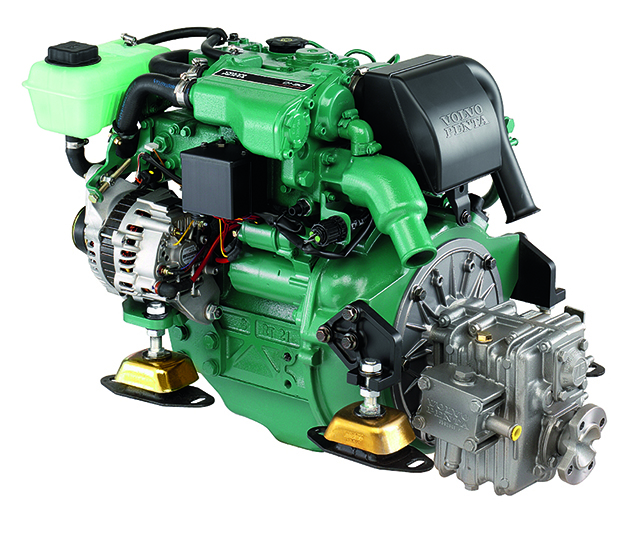
How it works: The diesel engine: The 4-stroke cycle
Understanding how your diesel engine works is key to knowing how to look after it, and fix it when it…

How it works: Looking after fuel: diesel, hoses and filters
Looking after fuel is essential for keeping your engine running smoothly. Callum Smedley shares his top tips
After-sales service
Spectra has one of the best reputations for after-sales service. In most places you’re more likely to find Spectra and Schenker dealers, but that doesn’t guarantee they’ll have parts in stock, and all manufacturers will ship parts to you. Spectra also offers rebuild kits which come with step-by-step instructions and special tools to get to those hard-to-reach O-rings. They feel like a lot of money for a bag of O-rings, but are a cheaper option than sending the unit back to the factory.
If you’re buying new, a warranty is highly valuable but once it runs out you’ll find out how pricey the parts really are. Some manufacturers give longer warranties if a certified technician installs the system.
Most ERD units are made out of engineering plastics such as Delrin which can split around fittings if over-tightened or if warm water is used during cleaning.
One leading UK dealer who sells all brands told me that since Spectra changed the type of plastic used a few years ago he’s had no returns, unlike rival brands. Spectra were tight-lipped on the material they use when Yachting Monthly asked them for details.

An average-sized watermaker will easily squeeze into the space under a bunk
Watermaker instillation tips
A bad installation can render a good machine useless, so there are a few key points to know. Use dedicated through-hulls for the saltwater intake and brine discharge. Make sure the intake is low enough that it won’t be exposed when heeling or in big waves to prevent air bubbles entering the system. Don’t install the intake where there will be turbulent flow, behind the keel, for example, or near the props and rudders. The discharge should be above the waterline.
To give the pump the best chance of producing the pressure needed, install it as low as possible in the boat. Follow the manufacturer’s recommendations on hose diameters and avoid long hose runs and tight turns that restrict flow.
Finally, use correctly sized wiring as the 12V pumps will underperform if there are voltage losses in the wiring.
Monitoring quality
A Total Dissolved Solids (TDS) meter measuring impurities in the output water coupled to a diverter valve can automatically protect the purity of your tank. Anything under 500ppm is fine to drink but a well-installed system should deliver 200-300ppm.
You can buy inline TDS meters, or stick meters that you dunk into a sample cup to monitor it manually. You’ll see it slipping over time if there’s a problem developing with the pump or membrane.

It’s important to flush or ‘pickle’ your watermaker if you decide to not use it for any period of time
Membrane care
The membranes will produce more output and cleaner output in warmer and less salty seas. For the best lifespan, use them every few days. Drying them out, or running chlorinated water through them will do irreparable damage.
According to Dupont, which makes the widely used Filmtec membranes, they should not be left unused for more than 24 hours, but in practice they can be left for around five days before organic growth risks building up on the membrane, which blocks it and reduces performance. This can sometimes be remedied with an alkaline flush if caught early.
The other thing that can block them is carbonate deposits. In this case, an acid flush will restore some of the membrane’s performance.
If idle for a few days, it’s worth flushing the membrane with fresh water. Some manufacturers recommend doing this after every use, but that’s to protect other components in their systems.
If the machine is going to go unused during the off-season, the membrane can be pickled in propylene glycol. Most manufacturers offer branded pickling solutions and restorative solutions which conform to their warranty and don’t react with other materials in the system.
Avoid using the watermaker in anchorages where other boats aren’t using holding tanks. Although the membrane will sift out e.coli, the pre-filters will become a nasty Petri dish of bacteria.

Pickling tablets will be less aggressive on internal metal components
Don’t leave me this way
Different manufacturers have different recommendations, but, as a general guide, here’s what to do if leaving your watermaker unused for any period of time.
1-5 days: In practice, leaving the membrane sitting in saltwater won’t do too much harm, even though the membrane manufacturer warns against more than 24 hours. Check your watermaker manufacturer’s recommendation though. For instance, Spectras suffer from dramatic internal electrolysis if left soaking in sea water.
1-2 weeks: Definitely flush it through with fresh unchlorinated water. Use a carbon filter to remove chlorine if you are flushing with tap water.
More than a month: Pickle it.
They used to recommend using acid (hence the term pickling) but now manufacturers recommend propylene glycol, which is less aggressive on O-rings and other metal components. Buying the branded solution for your machine will give you peace of mind.
If your boat lives in relatively clean water, think about setting a timer so the machine runs automatically every few days for 10-15 minutes. That’s long enough to flush the membrane and prevent organic build-up.
Enjoyed reading this?
A subscription to Yachting Monthly magazine costs around 40% less than the cover price .
Print and digital editions are available through Magazines Direct – where you can also find the latest deals .
YM is packed with information to help you get the most from your time on the water.
- Take your seamanship to the next level with tips, advice and skills from our experts
- Impartial in-depth reviews of the latest yachts and equipment
- Cruising guides to help you reach those dream destinations
Follow us on Facebook , Twitter and Instagram.
Sailboat Watermakers

It is not uncommon for people that want to take part in the sailing lifestyle to spend a lot of time out at sea. Since these boats are powered by renewable energy sources, they do not have the limitations of boats powered by fossil fuels. However, if a sailor is going to be out at sea for an extended period of time, they are going to need desalination appliances. Desalination is the process of making salt water drinkable. If you are looking for a sailboat watermaker, our marine desalination systems are the best option for you. Continue reading below to learn more from our experienced professionals.
What Are the Best Watermakers for Sailboats?
Sailboats come in many shapes and sizes, which means that there is no one correct sailboat desalinator for sale. In fact, when choosing a watermaker for your sailboat, consider factors such as capacity, energy efficiency, ease of installation and maintenance, and compatibility with your boat’s electrical system. It’s also important to choose a reliable and reputable brand like ECHOTec Watermakers with a good track record of customer support and service. Some of our most popular options for sailboat watermakers include the following:
- 12/24v DC Economy Watermakers
- 12 – 180v DC Watermakers
- Belt-Driven DC Watermakers (Modular)
- 115/230v AC Economy Watermakers
What Are the Benefits of Desalinators for Sailboats?
If you are wondering what exactly the benefits of using desalinators for sailors are, we are here to answer your questions. These include the self-sufficiency it would give sailors that want to take part in the liveaboard lifestyle. Our products are designed to be as easy to use and convenient as possible. Perhaps one of the most pertinent benefits of using a desalinator of this kind is that it provides a virtually unlimited supply of water. On the other hand, sailors that do not have a watermaker will need to rely on buying bottled water whenever they run out. This allows them to enjoy sailing without having to go to shore to buy new bottled water. Even if the person aboard the sailboat is not exactly living on the sailboat, a watermaker for yachts or sailboats maximizes the amount of time that sailors spend on the water.
How Does Sailboat Desalination Work?
The way that a watermaker works is quite interesting. The steps are the following:
- Seawater is taken in from the ocean through a pump or gravity system.
- The seawater is passed through a pre-filter to remove large particles such as sand, sediment, and other debris.
- The seawater is passed through a high-pressure pump where it passes through the RO membrane.
- The RO membrane allows water molecules to pass through while blocking salt and other contaminants. The resulting fresh water is collected on one side of the membrane, while the concentrated brine solution is discarded on the other side.
More About ECHOTec Watermakers
ECHOTec Watermakers is one of the top suppliers of boat watermakers and desalination systems. Our full selection of products includes both onboard watermakers and on-shore watermakers, and home desalination systems. If you are interested in purchasing one of these products, do not hesitate to contact our watermaker for boats supplier to learn more about what we could offer you today when it comes to sailboat watermakers.
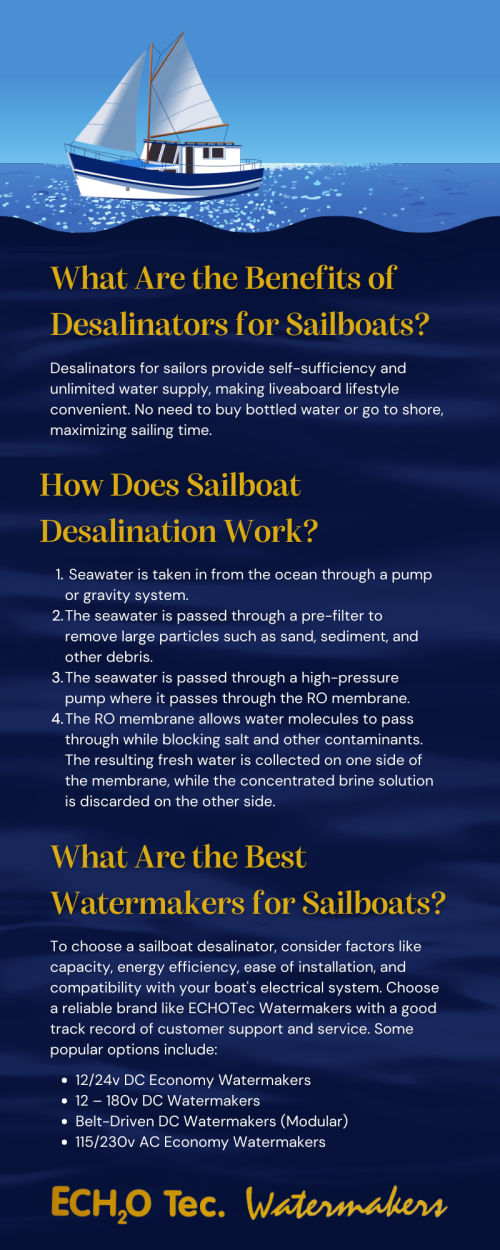
- New Sailboats
- Sailboats 21-30ft
- Sailboats 31-35ft
- Sailboats 36-40ft
- Sailboats Over 40ft
- Sailboats Under 21feet
- used_sailboats
- Apps and Computer Programs
- Communications
- Fishfinders
- Handheld Electronics
- Plotters MFDS Rradar
- Wind, Speed & Depth Instruments
- Anchoring Mooring
- Running Rigging
- Sails Canvas
- Standing Rigging
- Diesel Engines
- Off Grid Energy
- Cleaning Waxing
- DIY Projects
- Repair, Tools & Materials
- Spare Parts
- Tools & Gadgets
- Cabin Comfort
- Ventilation
- Footwear Apparel
- Foul Weather Gear
- Mailport & PS Advisor
- Inside Practical Sailor Blog
- Activate My Web Access
- Reset Password
- Customer Service

- Free Newsletter

Ericson 34-2 Finds Sweet Spot

How to Sell Your Boat

Cal 2-46: A Venerable Lapworth Design Brought Up to Date

Rhumb Lines: Show Highlights from Annapolis

Solar Panels: Go Rigid If You have the Space…

Leaping Into Lithium

The Importance of Sea State in Weather Planning

Do-it-yourself Electrical System Survey and Inspection

When Should We Retire Dyneema Stays and Running Rigging?

Rethinking MOB Prevention

Top-notch Wind Indicators

The Everlasting Multihull Trampoline

What Your Boat and the Baltimore Super Container Ship May Have…

Check Your Shorepower System for Hidden Dangers

DIY survey of boat solar and wind turbine systems

What’s Involved in Setting Up a Lithium Battery System?

The Scraper-only Approach to Bottom Paint Removal

Can You Recoat Dyneema?

How to Handle the Head

The Day Sailor’s First-Aid Kit

Choosing and Securing Seat Cushions

Cockpit Drains on Race Boats

Re-sealing the Seams on Waterproof Fabrics

Safer Sailing: Add Leg Loops to Your Harness

Waxing and Polishing Your Boat

Reducing Engine Room Noise

Tricks and Tips to Forming Do-it-yourself Rigging Terminals

Marine Toilet Maintenance Tips

Learning to Live with Plastic Boat Bits
- Belowdecks & Amenities
- Marine Electronics
- Systems & Propulsion
Test of Six 12-volt Watermakers
While at first blush all appear about the same size, we find important differences in output and current consumption. the spectra 180 is amazingly efficient but expensive. of the six, village marine tec's little wonder seems the most tried and true..
Last month we took an overview of the pros and cons of 12-volt watermakers. This month, we look at high-output machines from five manufacturers, ranging from systems from industry giants such as Village Marine to small shops such as SK Engineering. All of the watermakers we looked at were production models, although the Spectra 180 we tested had been re-configured to serve as a demonstration model.
As we began our market survey and field testing, we discovered that a number of other manufacturers are jumping into the fray, realizing that 12-volt watermakers constitute a small but growing segment of the market. Most notable among these new players is HRO-another industry giant-which has been promising a state-of-the-art, computer-controlled, self-contained 12-volt watermaker for more than a year. We saw the literature a year ago at the Miami Boat Show. We saw a non-operational mockup last fall at the Southampton, England boat show. We have yet to see a functional machine in the flesh.
With the assistance of Andy Cortvriend of Ocean Link, a knowledgable Portsmouth, Rhode Island, marine servicing company, we tested product output, water quality, and electrical consumption of all the watermakers. Electrical consumption was measured with a Cruising Equipment amp-hour meter, using gel cell batteries maintained at full capacity by a Heart inverter/charger between tests.
Saltwater was pulled from lower Narragansett Bay into a large storage tank maintained at a constant temperature during the tests. The waters at our Little Harbor test facility are not as clean as open ocean waters, but are closer to the reality of the watermaking most cruisers will experience. This was not a pure laboratory test with manufactured sea water of exactly the right total dissolved solids (TDS).
We then examined each machine carefully on the bench, looking for weak points, strong points, potential installation or maintenance hang-ups, and general quality of construction.
The quality of output water was tested with a TDS meter and all machines easily met standards for potability.
The real test of any watermaker is how it performs over time-not just months, but years. Because maintenance is a key factor in longevity and trouble-free operation, the owner/operator will bear a large portion of the responsibility for the long-term success of any watermaker installation.
Here are our findings.
Village Marine Little Wonder When Village Marine Tecs Little Wonder was introduced almost a decade ago, it was the first 12-volt watermaker that actually had the capacity to supply the water needs of a medium-sized cruising sailboat without almost continual running. More than 1,500 of these compact, well-made machines have been produced, and there have been virtually no changes to the design or components over the entire production run.
Both 12-volt and 24-volt models are available, with the higher voltage model producing slightly more product flow.
The standard model is totally self-contained in a well-designed package, with all components bolted to a heavy aluminum chassis, topped off with a removable aluminum cover. Mounting requires drilling through the chassis for suitable through-bolts.
The three plumbing connections-feed water, product water, and brine discharge-are pre-plumbed through one end of the case. The wiring junction box also contains connections for an optional feed water boost pump, and an internal 25-amp breaker to protect the electrics.
Although the package is tightly plumbed, there is reasonable space between components for service.
Power for the high-pressure pump is provided by a continuous-duty 1/4-hp. Pacific Scientific motor, rated at 21.5 amps at full power. The motor is connected to the high-pressure pump by a lightweight cogged belt.
The heart of the Little Wonder is its proprietary high-pressure pump, specially made by Village Marine for this machine. It features a titanium pump head with ceramic plunger-a combination which should be corrosion-proof for the life of the watermaker. All wetted parts in the pump are titanium, type 316 stainless steel, or ceramic. High-pressure plumbing and connectors are type 316 stainless.
Monitoring includes a high-pressure gauge and product flow gauge. System pressure can be adjusted if necessary using an open-end wrench, although the factory pre-set pressure of 800 psi should be correct for most watermaking situations. The pressure regulator is a high-quality regulator, rather than the more commonly seen needle-valve adjuster.
The fiberglass pressure vessel and the standard-sized 2521 membrane are both manufactured by Village Marine, although they are industry-standard in size.
In our tests, the Little Wonder produced a product flow of 5.8 gph at 13 volts, drawing 16.7 amps-about 37.4 watts per gallon. This does not include the 1-amp current draw of the small optional booster pump, which is required for above-the-waterline installations, long feed water runs, or installations containing multiple pre-filters.
The water produced by the machine we tested was very high quality. The noise level of 79 dB, with the cover removed, was louder than the two quietest machines tested, but was not loud enough to be objectionable.
The self-contained unit is 25.5″ long, 11″ wide, and 9.25″ high, and requires a slightly larger mounting space to accommodate plumbing connections and allow access for removal of fastenings holding the cover. For tight installations, a modular version is available, which does away with the mounting chassis and uses flexible high-pressure hoses rather than rigid stainless steel tubing. Obviously, installation of the modular unit requires slightly more time, but offers a lot of flexibility-very desirable in field installations aboard the typical cruising sailboat, in which locker or shelf space is at a premium.
Documentation is excellent, with a 35-page manual covering installation, operation and maintenance.
The warranty is somewhat complex. The membrane has a three year warranty, the pressure vessel a lifetime warranty, the high pressure pump a one-year warranty-although some of its internal components have only a 90-day warranty-and the electric motor 12 months. You need a flow chart to keep it straight.
The Little Wonder comes with pre-filter, three-way cleaning valve, basic plumbing connectors, and a membrane cleaning kit. You supply PVC hose, hose clamps, and the wiring connection. Options include the boost pump (standard with the modular version, $144 for the self-contained version), a three-way sampling valve ($38), a pre-plumbed fresh water flushing system ($150), hand-held salinity meter ($49), and spares kit for extended cruising ($199). For long-range cruising, all of these options are nearly essential for any properly installed watermaker.
List price of either the self-contained or modular 12-volt Little Wonder is $3,195. It is available at slight discounts through some mail-order catalogs, and there are periodic promotions at boat shows featuring special prices and thrown-in options.
Weight of the self-contained system is 63 lb. (The modular system weighs 48 lb.)
Village Marine will soon introduce a higher-output version of the Little Wonder, a 1/3-hp. watermaker in almost the same package size. Current draw, however, will be about 26 amps, requiring heavier wiring and perhaps a look at your battery capacity and charging capabilities.
Bottom Line: There are quieter 12-volt machines, more efficient ones, cheaper ones, and others that put out more water. The Little Wonder, however, has a combination of features-ease of installation, relatively low current draw, high quality components, and a 10-year track record-that is hard to beat. You can’t go wrong with this watermaker.
SK Engineering DC 150 SK Engineering is a small watermaker manufacturer based in Ft. Pierce, Florida. They do virtually no advertising, go to few boat shows, and have a very low-overhead operation geared to the Florida market. While most of their units are AC-powered, their DC 150 is a 12-volt model with a nominal output of 6 gallons per hour.
The DC 150 is powered by a 1/3-hp. continuous-duty Pacific Scientific motor rated at 26 amps. This is a larger version of the motor that powers the Village Marine Little Wonder.
The membrane is a standard 2521, and the pressure vessel appears identical to that used by Village Marine. All high-pressure fittings are type 316 stainless, as is the rigid high-pressure plumbing.
A Giant high-pressure pump provides pressure for the system. This is a standard industrial pump with a stainless steel pump head. A complete servicing manual for the pump is provided.
This is an open-frame system, with the components mounted on a heavy aluminum chassis. The footprint is 18.5″ x 12.5″, with a height of 8.5″. The pressure vessel is mounted on the outside of the chassis, increasing overall dimensions to about 25″ long outside the footprint of the mounting frame. Rubber vibration mounts are provided to isolate the chassis, reducing noise and vibration.
System pressure is user controllable via a knob-operated valve on the panel. Monitoring capabilities include system pressure and product water flow.
In operation, the DC 150 was one of the quietest machines tested, producing a maximum of 72 dB of noise. Product flow of the test machine was 6.5 gallons at 800 psi, with the motor drawing 21.3 amps at 13 volts. This translates into electrical consumption of 42.6 watts per gallon of water produced. As with other systems, adding a booster pump for above-waterline installations would add to total current draw. SK states that the system will operate without a booster pump in installations up to 2′ above the waterline.
One of the nicer features of this machine is the availability of a remote operating panel. This option allows routine operation of the system without direct access to the watermaker itself, which greatly increases installation flexibility.
The system is supplied with a pre-filter with a vacuum gauge, allowing you to monitor the condition of the filter without opening the housing. A freshwater flush kit-highly-desirable in any installation-is a $125 option. The 12-volt booster pump, drawing 1 amp, is a $120 option. An extensive cruising kit, including 12 pre-filters, rebuild parts for the high-pressure pump, cleaner, preservative, and other spares, costs $330.
SKs pricing is very competitive. The self-contained DC 150 has a list price of $2,740, but has a discount price-which we suspect would be available to most sailors who approach the manufacturer directly-of $2,350. The remote panel version has a discount price of $2,450, although the list price jumps to $3,140.
The system documentation is basic, but adequate. Total system weight is 74 lbs.
Being a small manufacturer, SK has a limited network of regular servicing dealers, but since all the system components are essentially off-the-shelf items, any good watermaker technician could repair the unit if necessary.
This is a quiet system with high-quality components and a great deal of installation flexibility when coupled with the optional 8″ x 8″ remote panel. Its open-frame design is easily serviced, although the package is not as neat as a totally enclosed package like the Little Wonder.
Bottom Line: With its 1/3-hp. motor, electrical installation will require careful thought, and you will need to look at your entire charging system and battery capacity a little more closely than you would with a 1/4-hp. machine.
The low price makes this system worth looking at. It is simple, soundly engineered, and utilizes good quality, standard components that are easily serviced. The only potential drawback is the small size of the manufacturer, which might limit long-term support.
PUR PowerSurvivor 160E The PowerSurvivor 160E is PURs entry into the high-output 12-volt watermaker market. It is the latest in a long line of machines that dates back to the PowerSurvivor 35, the first practical small 12-volt watermaking system.
The 160E uses a standard 2521 membrane in a proprietary housing. It is a dead-simple modular system, utilizing a Leeson 1/3-hp. motor directly coupled to a proprietary stainless steel high-pressure pump. Flexible high-pressure hose between the pump and the pressure vessel allows a great deal of mounting versatility, including bolting the entire system to a bulkhead. All high-pressure fittings are 316 stainless steel.
At 54 lbs. for the entire system, this is one of the lightest high-output watermakers we tested.
When we say dead-simple, we mean it. Other than the pressure bypass valve and the on-off switch-which you provide-there are no gauges to monitor, no product flow meter, and no means of adjusting system pressure, which is pre-set at the factory and is not intended to be user-adjusted. You would still, of course, install the product sampling valve, cleaning valve, and pre-filter, just as with all other units.
The 160E is a gravity feed system, and can only be installed below the waterline.
Our test machine produced 6.5 gallons of water per hour, drawing 17.3 amps at 13 volts-less than we would expect for a 1/3-hp. system. This yields an energy consumption of 34.6 watts per gallon of water-more efficient than average for the watermakers in our tests.
There are several drawbacks to the PowerSurvivor 160E. First, the system is the noisiest of any we tested, putting out 80 dB at our standard test distance of 1′. Furthermore, the reciprocating drive system of the high-pressure pump produces not a steady noise, but one punctuated by a loud popping sound at one stage of the piston stroke. We would recommend mounting this watermaker in a sound-insulated compartment if possible.
The reciprocating pump also produces pulsing in the systems hoses, which should be well-secured to prevent fatigue over time.
This is one of the more expensive watermakers we tested, with a list price of $4,440. Several discount marine catalogs sell the 160E for as low as $3,800. Options include a repair seal kit ($80), an extended cruise kit ($200), and an extensive preventative maintenance package ($420).
On the plus side, routine service of the system, including replacement of high-pressure pump seals-a requirement every 1,000 hours of operation-is simple and well-documented in the excellent instruction manual.
We also looked at two other units from PUR, the PowerSurvivor 80II modular and the newly-designed PowerSurvivor 40E. The 80II is very similar to the 160E, simply scaled down. We did not test it, but since all the other PUR machines met the manufacturers specifications, we expect this one to do the same. The smaller-diameter membrane of the 80II limits you to membranes from the machines manufacturer. It lists for $3,330, and is routinely discounted to about $2,950-about the same as the higher-output Little Wonder.
The PowerSurvivor 40E is the totally re-designed successor to the PowerSurvivor 35, the original high-output 12-volt watermaker. In our tests, its 1/18-hp. motor drew 4.8 amps, producing about 1.6 gallons per hour, consuming 39 watts per gallon of water. It is very compact, and like all PUR watermakers, easy to service and operate.
At 72 dB, its noise level was the equivalent of the quieter large 12-volt machines.
With its light weight (25 lbs.) and tiny footprint-about 15-1/2″ x 15″ x 6″ high-the 40E would be the most suitable watermaker for a single sailor or a couple cruising on a small or very light boat-a multihull, for example-with limited electrical generating capacities, perhaps just a few solar panels and small batteries.
In an emergency, the motor can be disconnected from the 40E, and it can be operated manually by a handle, just like its Survivor 35 predecessor. Because virtually all the parts of the 40E are proprietary, including the pressure vessel, membrane, and pump, you will only be able to service the units with parts from PUR.
List price of the 40E is $2,220/$1,900 discount, with options analogous to those available for larger PUR machines.
Bottom Line: All three of these smaller watermakers are actually the core business for PUR, and fill specific niches where there is no competition. Although the 160e is an easily serviced watermaker, and is more efficient than average, its high price and noisy operation are drawbacks. If the installation flexibility of the 160E is not essential to you, we think there are other 12-volt watermakers of similar capacity and quality of construction that offer better value.
Caribbean Technology The Caribbean Technology YM-200 DC 12 made by Great Water is the highest-capacity 12-volt watermaker we tested. Its rated output of 10.2 gph at 800 psi significantly exceeds that of most of the watermakers in our test.
In many ways, this modular system mimics both the output and sophistication levels of more mainstream engine-driven or 110-volt systems, including a direct drive high-pressure pump, high and low pressure automatic shutoff, and a sophisticated remote operating panel including power switch, pressure regulator, and gauges for system pressure, product water flow, and brine flow.
Power is provided by a 1/2-hp. continuous-duty motor directly coupled to a stainless steel Wanner Hydracell industrial pump. An instruction manual for the pump leads you through the periodic maintenance required. A new oil venting system in the pump claims to have eliminated an earlier tendency of Wanner pumps to weep oil.
A Codeline pressure vessel holds a standard 2521 membrane. Because this is a modular system, high-pressure plumbing includes flexible hose rather than rigid tubing. All fittings are 316 stainless steel.
A Flojet boost pump is standard, allowing the system to be mounted above the waterline. This pump-actually designed as a shower drain pump-adds 3.6 amps to the current draw of the system.
A product flow rate of 10.2 gph is pretty much the absolute capacity of a 2521 membrane, and our test system had no trouble achieving that rate of flow. The downside is that to achieve this flow, the electrical demands of the system are much higher than any other watermaker we tested: 38 amps at 13 volts, or 48.4 watts per gallon.
You would never run this system without running the engine at the same time. The current draw is high enough to drop system voltage down instantly. In all fairness, for maximum efficiency none of the systems drawing 15 amps or more should be operated without running the engine at the same time.
Because of the high current draw, your charging system should be equipped with a big alternator if you choose this watermaker. To take advantage of the big alternators capacity, youll want a big bank of batteries. The system will probably need a 50-amp circuit breaker separate from the main panel, as many main panels do not have service wiring that is really heavy enough for this type of load.
You will also need heavy wiring between the circuit breaker and the systems electrical relay box. The manufacturer recommends 4-gauge wiring, which is heavy and may in some cases be difficult to run.
Obviously, a great deal of planning and thought is required before installing a system of this capacity and with these electrical requirements.
On the plus side, the fully modular design allows the system to be mounted in a surprisingly small space, essentially little more space than is required by a modular 6-gph system.
Weight of the YM-200 is 83 lbs.
The manual includes excellent system schematics, and reasonably thorough instructions for installation, operation, and maintenance of the watermaker.
As you might expect, the size of the pumps and motors result in a fairly noisy system: 80 dB at a distance of 1′ from the high-pressure pump-the big noisemaker in any system. Due to its weight, electrical needs, and noise, the best location for this watermaker is a sound-insulated engine room or compartment, as close as possible to the ships electrical supply.
Bottom Line: The best application for this system is a larger boat with existing electrical capacity, and lacks a genset or a means of installing an engine-driven watermaker.
With a list price of $3,500-which is sometimes discounted through dealers-this is not an expensive system. In fact, on a dollar cost per gallon of water produced per hour basis, this is the cheapest system of the entire lot to purchase. It is not an electrically efficient system, but if the maximum output in the minimum time is your primary criterion in a 12-volt watermaker, the Caribbean Technology is definitely worth considering.
Spectra 180 The Spectra 180, and a few variations on its basic version, are the only watermakers produced by Edinger Marine Services. It is radically different from other 12-volt watermakers, extracting a lot of freshwater with astonishingly low power consumption.
When you first see the Spectra 180, your first impression is that one component-a big DC motor to power the high-pressure pump-has been left out. In fact, the entire system is powered by a small 12-volt pump and motor-about 1/8-hp.-no larger than the water pressure pump on a 35-footer. This is possible due to the unique design of the Clark pump, a remarkably energy-efficient pump created specifically to power this watermaker.
The Clark pump is totally unlike any other high-pressure pump used in watermakers. To oversimplify, the Clark uses two opposing pistons and cylinders with a single connecting rod. System pressure is created by the connecting rod driving the piston into the opposite cylinder. Without a detailed technical explanation of exactly how any why this works, it is fair to say that compared to other methods of creating adequate pressure for reverse osmosis, this is a remarkably energy-efficient system.
The Spectra 180 is also different from other watermakers in that it uses a standard full-size membrane whose pressure vessel is just over 44″ long-almost twice the length of the pressure vessel containing the 2521 membrane used by all the other high-capacity systems in out tests. Mounting this much longer pressure vessel may present problems in some boats. The Clark Pump housing itself is almost as long as the pressure vessel for a 2521 membrane.
According to the manufacturer, they have torn down Clark pumps after 3,000 hours of operation and found no significant wear. In any case, the pump is easy to overhaul in the field by a reasonably proficient owner. An overhaul manual for the pump is part of the system documentation, which is basic but adequate.
This is a modular system, with a remote control panel that can allow basic operation without direct access to the other system components. Total weight is about 51 lbs.
Our test system was a factory demonstrator, configured as a self-contained frame system with some performance compromises compared to the correct, conventional modular installation. Instead of a single large membrane, our test system utilized two 2521 membranes, similar in flux area to the larger membrane.
From a pure electrical efficiency perspective, the Spectra 180 was the most impressive watermaker we tested. With a current draw of 8.6 amps at 13 volts, our test unit pumped out fresh water at the rate of almost 9.5 gph–almost as much as the Great Water system, which draws almost five times as much power. Thats only 11.8 watts per gallon, by light years the most electrically efficient machine in our test.
In addition, at a noise level of 65 dB, this was the quietest system.
The Spectra 180 is not perfect, however. The system runs at low pressure compared to other systems-just 600 psi with our 70F water temperature-and the product water, although perfectly acceptable, had the highest total dissolved solids in our tests. Since product water quality can vary with different membranes, we are reluctant to attach much significance to this slightly lower water quality, which was still well within standards for drinking water.
We have some concerns about the relatively low feed water flow rate through the big membrane. The more water that passes over a membrane, the better it likes it, according to most manufacturers. The Spectras flow rate of about 90 gph is quite small for the large membrane, and we do not know how the longevity of the membrane might be impacted by this.
The ends of the main block of our systems Clark pump were machined from bronze, and showed some signs of surface oxidation at the interface to the Delrin main block. According to the manufacturer, future editions of the Spectra will have stainless steel components in place of bronze.
Likewise, the pressure relief needle valve on our test system dribbled when it was barely cracked open. We were told that this component has also been re-designed.
Our test system utilized brass high-pressure fittings, rather than the type 316 stainless used by every other manufacturer. Some manufacturers claim that the only reason to use brass is to save money, while others admitted to us, a bit reluctantly, that they had never seen a brass high-pressure fitting with significant corrosion, and stainless was generally used for appearance and galvanic compatibility as much as for longevity purposes.
Given the cost of the Spectra 180, we think you should get type 316 stainless fittings, and type 316 pump block components. The price of the Spectra 180 is $4,650, the highest of any machine we tested. You pay a significant premium for a major increase in electrical efficiency. Service, parts, and options prices are similar to those of other manufacturers: $350 for a long-term offshore service kit, for example. The price of the installation kit-$275-strikes us as a bit high for such parts as the three-way servicing and diverting valves that some other manufacturers include in the price of the basic system.
According to the manufacturer, although the system is fully functional and in production, they are still looking at further developments, including a composite Clark pump that would have no metal components. Relatively few of these machines are in use in the field at this time, as the product is quite new to the market.
Bottom Line: The most attractive feature of this system is its energy efficiency. We are less impressed by its price, and by the fact that it would appear to be a system with some room for refinement. However, if being able to run a watermaker without running the engine at the same time is important to you, and if price is less important than electrical efficiency, the Spectra 180 would be the choice among the systems we tested.
Conclusions/Recommendations Because virtually every cruising boat has different needs, priorities, and installation requirements, no single high-capacity 12-volt watermaker is going to fit the bill for every sailor. These are all well-designed, fully functional machines. Each has specific advantages and disadvantages, which we have described.
All meet their manufacturers performance specifications in terms of electrical consumption and product water output. Variances of +/- 10% to 15% from the manufacturers specifications for performance are normal.
The variations in product water quality we found are not significant. All the watermakers produce water that meets international standards for potability. The quality of the water will vary over time with any watermaker and with any membrane. A simple hand salinity tester-available from most watermaker manufacturers-is all that is required for routine checking of water quality. Most owners who use their watermakers daily don’t even bother testing salinity. They start the machine, let it run for a few minutes, taste the water, and if it tastes good, divert it to the tank.
All watermakers have similar maintenance requirements, and all we tested are reasonably easy to service. Your choice of a specific system will be largely the result of specific requirements for your boat and your cruising. The key questions are the amount and shape of space you have for the watermaker, the existing or planned electrical generating and battery storage capacity of your boat, and the amount of water you must make in a specific time frame.
All watermakers are maintenance-intensive. To a large extent, the long-term, hassle-free operation of a watermaker is a function of where and how it is used, and how religiously routine maintenance is performed. None of these machines will stand abuse.
A freshwater flushing system is an important component of a watermaker installation. Of the machines tested, only Village Marine and SK Engineering offer a ready-made freshwater back flush system as an option. While it is an easy system to design and build for anyone capable of installing a watermaker, it should be offered and recommended as an option by other manufacturers as well.
None of these systems is beyond the installation capabilities of a reasonably handy boat owner. If space permits, a totally self-contained system such as Village Marines Little Wonder will be slightly easier to install, but the total difference in installation time between self-contained and modular systems should not be more than a few hours unless there are vexing component mounting problems to solve. Plumbing and wiring connections are essentially the same for modular and self-contained systems, although a modular system with a remote panel will certainly take the longest time to install because of the number of individual components that must be placed.
All installations require attention to detail, particularly when it comes to wiring. We would not recommend you install a watermaker as the first major project you undertake on your boat, since it will require putting in a through-hull, installing heavy-duty wiring, and completing some plumbing that may in some boats be more difficult than it may first appear.
While all watermakers are covered by manufacturers warranties, all specifically exclude damage due to abuse in operation, poor maintenance, or improper installation.
A watermaker is not a use-it-and-forget-it product. Its for those who live aboard. If you don’t use it regularly and maintain it properly, you are wasting your money, and you shouldnt own one. On the other hand, if you are willing to accept the responsibility of maintaining a fairly demanding piece of equipment, a 12-volt watermaker can give you-particularly if you are a cruising sailor who desires long-term independence from shore-a degree of freedom you may not otherwise find.
Contacts- Edinger Marine Service, Inc., 298 Harbor Dr., Sausalito, CA 94965; 415/332-3780, fax 415/332-8527. Great Water, Inc., 5148 Peach St. Erie, PA 16509; 814/838-0786, fax 814/838-8700. Ocean Link, 52 Maritime Dr., Portsmouth, RI 02871; 401/683-4434. PUR, Recovery Engineering, 9300 75th Ave. North, Minneapolis, MN 55428; 800/845-7873, fax 312/315-5505. SK Engineering, 4256 N. US 1, Suite 1, Ft. Pierce, FL 34946; 800/489-0852, fax 561/489-0808. Village Marine Tec., 2000 West 135th St., Gardena, CA 90249; 800/421-4503, fax 310/538-3048.
RELATED ARTICLES MORE FROM AUTHOR
Excellent article, thank you for the research and detailed info.
Agree! Thank YOU
I really appreciated reading your recommendation, especially power consumption from one manufacturer to the other.
I am some how confused with Spectra manufacturing and Katadyn. I thought it was all Katadyn for some time now. When was this test done?.
Great review, except it would have been helpful to have specific TDS figures for the output in each case.
The contact information for SK engineering is wrong. Went to some health insurance company that sounded like a scam.
LEAVE A REPLY Cancel reply
Log in to leave a comment
Latest Videos
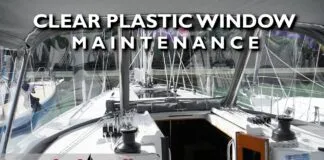
What’s The Best Vinyl Window Cleaner for Your Boat?

40-Footer Boat Tours – With Some Big Surprises! | Boat Tour

Electrical Do’s and Don’ts

Bahamas Travel Advisory: Cause for Concern?
- Privacy Policy
- Do Not Sell My Personal Information
- Online Account Activation
- Privacy Manager
- BOAT OF THE YEAR
- Newsletters
- Sailboat Reviews
- Boating Safety
- Sailing Totem
- Charter Resources
- Destinations
- Galley Recipes
- Living Aboard
- Sails and Rigging
- Maintenance
- Best Marine Electronics & Technology
How to Install a Watermaker in a Sailboat
- By Ellen Massey Leonard
- Updated: March 26, 2018
Fresh water is one of the few things the human body cannot do without. A person can survive several weeks without food but only three or four days without water. This is why the logs of explorers such as James Cook are filled with references to anchorages where rivers were found, descriptions of long days working to replenish the ship’s water supply and worried remarks about the number of casks found sour in the hold midocean. The tales of voyaging yachts, such as John Guzzwell’s Trekka and Frank Wightman’s Wylo, also devote paragraphs to rain catchment and refilling the tanks in port. This was our situation when my husband, Seth, and I set off as cash-strapped college kids to circumnavigate aboard a vessel much more akin to the home-built Wylo than anything on the market today. We tried catching rain, we took seawater showers and we spent long days in remote anchorages hauling buckets of fresh water from shore to our boat.
In spring 2014, however, as we were preparing for our current voyage to the Arctic on our new-to-us boat, Celeste , Seth and I learned of Katadyn’s PowerSurvivor 40E, an efficient, low-draw watermaker. We’d been worried about our water supply for this journey because Celeste carried only half the water capacity of the heavy-displacement vessel on which we’d circumnavigated and yet the Arctic is a desert — water would be expensive or even impossible to obtain there. We debated filling the bilge with gallon jugs, à la cruiser Annie Hill, but didn’t want the extra weight pushing down our waterline. So, we approached Katadyn (now called Katadyn Group, with watermakers branded under the name Spectra) with a sponsorship proposal for our Arctic voyage and were soon the owners of a new 4 amp, 1.5-gallon-per-hour desalinator that we could operate manually in the event of a power failure.
Compact and relatively lightweight, the PowerSurvivor was simple and straightforward to install. Seth and I decided to fit it in a locker in the head, and we found that we could still stow the locker’s previous contents (mostly toilet paper and paper towels) without any trouble. We chose the head locker for several reasons: It was a convenient location for installation and servicing; it provided easy access to a saltwater intake and a drain; and it was a dry area free of fuel vapors or excessive heat, as stipulated by the owner’s manual. Our classic cutter was on the hard when we performed the installation, although it would be simple enough to do in the water; the only difference is that you would have to close the seacocks.
As with many boat projects, the key to a hassle-free installation is the preparation: It’s important to configure as many of the hoses and electrical connections as possible before affixing the watermaker itself. The PowerSurvivor came with everything we needed that was not specific to Celeste , including valves, hoses and hose clamps. Our first step was to fit a strainer and T-valve on the saltwater intake hose. This allowed us to use the intake either for its original function of flushing the head or for the reverse-osmosis system (though you wouldn’t want to do both at the same time!). The through-hull had the advantage of being at a low point on our hull, minimizing the chance of air intake while heeling or in rough conditions. It was also ¾ inch wide, satisfying the requirement of at least ½ inch for the desalinator, and of course, it had a seacock for safety.
We then cut our sink’s drain hose and fit another T-valve for the briny waste to exit the boat. We also mounted a three-way valve for the fresh water coming out of the desalinator. This let us run the fresh water either through a ¼-inch-inner-diameter tube to test the water or to fill jerry jugs, or — once we’d tested the desalinated water’s quality — through a 3⁄8-inch reinforced plastic hose to a T-valve we inserted into our starboard tank’s vent.
Next came the electrical connections. Using 14-gauge tinned, stranded copper wire, we ran power from our main circuit-breaker panel to a terminal bar in the locker with the watermaker. Once we had hooked up the wires that came with the PowerSurvivor to that terminal bar, the watermaker had its own switch on the breaker panel to turn it on and off.
We then mounted the pre-filter below the pump intake, as recommended by Katadyn’s engineers, to allow air bubbles to pass easily. There was plenty of room for it alongside our pressure-water hoses, and even room to mount a silt-reduction filter if we needed it for brackish or shallow water, inland waterways or areas of glacial runoff, this last being the most likely on our present voyage. The pre-filter should be mounted vertically and through-bolted with stainless-steel hardware. Its three-way valve — which allows you to choose between seawater intake for regular operation and another hose for membrane-cleaning solution — should be sealed with nonhardening paste, such as Loctite 5331, for an airtight seal. We also mounted the pre-filter in a part of the locker that’s easily accessible for maintenance, which includes inspecting and emptying the housing, cleaning the filter regularly and treating the membrane any time we won’t be using it for a week or more. In the tropics, this time frame is closer to three days, but in higher latitudes, the cold water and air keep algae growth down a little longer.
With all that completed, it was time to mount the drive assembly/pump/membrane unit. The trickiest part was holding the 25-pound device in place while Seth marked its position. Seth then drilled the holes in the bulkhead, after which I held up the PowerSurvivor while he fitted the first two ¼-inch stainless-steel bolts. With the desalinator firmly in place, the second two bolts were easy. We made sure to mount the desalinator with the long axis of the membrane in a horizontal position; to do otherwise would risk ruining either the drive assembly (if the pump developed a seawater leak) or the pump (if the drive assembly developed an oil leak).
Because we had installed all the hoses in advance, the only thing that remained was to plug in the unit. We connected the 3⁄8-inch saltwater intake hose from the pre-filter, the 3⁄16-inch freshwater hose from the end of the membrane canister to its three-way valve, and the 3⁄8-inch briny-waste hose out to the T in the sink drain. Then, we attached the electrical wires from the drive unit to the terminal bar (with the breaker switched off, of course). The owner’s manual recommends either leaving enough hose coiled next to the desalinator so that you can pull it out for manual operation without undoing your installation, or assembling a separate set of hoses so you can move it to any location for manual operation. We originally left lots of hose coiled up but decided after the first operation to shorten our hoses to decrease the distance the intake water had to travel. We opted for assembling a separate set of hoses for emergencies.
Treating the membrane to prevent biological growth had been a mystery to Seth and me before owning a watermaker, but as it turns out, that too is easy. First, we lifted the lever on the pump’s cleaning valve. According to the manual, you are supposed to use 2 quarts of desalinated water from the PowerSurvivor for the preserving process in order to avoid using chlorinated (city) water that could damage the membrane. We had neglected to keep enough water from our last use of the desalinator (and were now in the marina where we planned to keep Celeste for the winter and where we didn’t want to run the unit), so we bought a gallon of distilled water. We prefer to use more than 2 quarts to ensure that plenty makes it through the unit, since some stays in the pre-filter. Into this we mixed — according to its instructions — the membrane preservative solution that had come with the PowerSurvivor. We positioned the three-way valve so that the product water would run through the testing hose rather than into our starboard tank. Then we turned the lever on the pre-filter’s three-way valve so that it would use the membrane cleaning intake hose rather than the saltwater intake. This intake hose has a small strainer attached at the end; we put this into our container of distilled water and membrane preservative. Then it was a simple matter of running the desalinator until all the preservative solution had been drawn through and foamy water was coming out the reject-brine hose. Because we were leaving Celeste in the Aleutian Islands, we continued to run the watermaker until air was coming through the brine hose as a precaution against freezing conditions.
The PowerSurvivor has been a big success for us so far. It takes up hardly any storage room, it’s easy to operate and maintain, the water is as pure as it should be and the desalinator produces its promised 1.5 gallons per hour at an average of 4 amps. The manufacturer warns that it might require more power upon first operation (we found that it did not) and that its output might decrease in water below 57 degrees Fahrenheit. The chart in the owner’s manual shows capacity dropping to about 90 percent at 55 degrees and 60 to 80 percent in water below 40 degrees. In our first summer with the desalinator — during which the coldest water temperature we experienced was 49 degrees, in the Bering Sea — we did not see any noticeable drop in output or increase in current draw, and thus found the watermaker to be very reliable in normal circumstances. In summer 2015, we tested the machine at the edge of the polar pack ice, at 71.4 degrees N in the Arctic Ocean above Barrow, Alaska. With the sea temperature at 37 degrees, we did find a modest decrease in output: 5 liters per hour instead of the usual 6, which equates to 83 percent of normal and thus better than the engineers’ predictions. In other words, the PowerSurvivor has more than lived up to our expectations.
Having sailed long distances both with and without a watermaker, I’m now convinced that the half-day project of installing the PowerSurvivor and the minor task of servicing it when needed is well worth it. We no longer spend our first day after a passage hefting buckets of water. During our summer in the Arctic, we didn’t refill our tanks from shore for seven weeks and yet we never rationed ourselves — in fact, we took frequent freshwater showers. Now, if we want to anchor and avoid tying up to a dock, we can. If we doubt the quality of the shore water, we don’t have to fill up with it. And all this with only the power produced by our solar panels. Capt. Cook would have loved it.
Ellen Massey Leonard and her husband, Seth, have circumnavigated the globe and cruised extensively in Alaska and the Arctic. Ellen chronicles her adventures at gonefloatabout.com .
- More: How To , Living Aboard , watermakers
- More How To
How to Protect Your Spars from Corrosion
Sailing totem refit series: the forward head makeover, fatty goodlander: dealing with chafe while cruising, how to rig everything in your favor, route planning in the face of climate change, new to the fleet: pegasus yachts 50, imtra named employee-owned company of the year.
- Digital Edition
- Customer Service
- Privacy Policy
- Email Newsletters
- Cruising World
- Sailing World
- Salt Water Sportsman
- Sport Fishing
- Wakeboarding
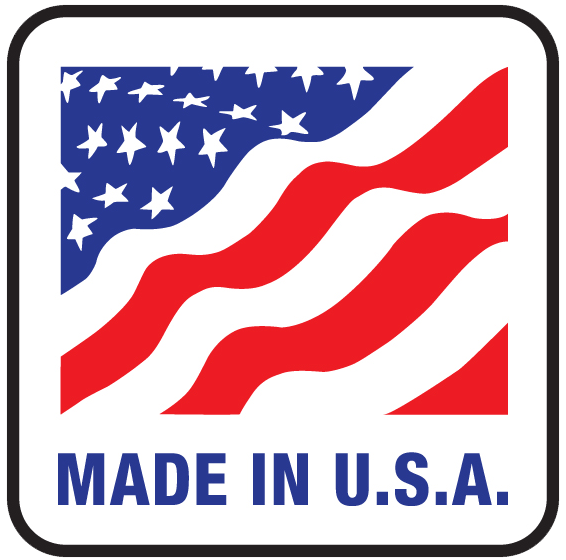
Our products are proudly manufactured here in Fort Lauderdale, Florida USA!
- Afghanistan (USD $)
- Åland Islands (USD $)
- Albania (USD $)
- Algeria (USD $)
- Andorra (USD $)
- Angola (USD $)
- Anguilla (USD $)
- Antigua & Barbuda (USD $)
- Argentina (USD $)
- Armenia (USD $)
- Aruba (USD $)
- Ascension Island (USD $)
- Australia (USD $)
- Austria (USD $)
- Azerbaijan (USD $)
- Bahamas (USD $)
- Bahrain (USD $)
- Bangladesh (USD $)
- Barbados (USD $)
- Belarus (USD $)
- Belgium (USD $)
- Belize (USD $)
- Benin (USD $)
- Bermuda (USD $)
- Bhutan (USD $)
- Bolivia (USD $)
- Bosnia & Herzegovina (USD $)
- Botswana (USD $)
- Brazil (USD $)
- British Indian Ocean Territory (USD $)
- British Virgin Islands (USD $)
- Brunei (USD $)
- Bulgaria (USD $)
- Burkina Faso (USD $)
- Burundi (USD $)
- Cambodia (USD $)
- Cameroon (USD $)
- Canada (USD $)
- Cape Verde (USD $)
- Caribbean Netherlands (USD $)
- Cayman Islands (USD $)
- Central African Republic (USD $)
- Chad (USD $)
- Chile (USD $)
- China (USD $)
- Christmas Island (USD $)
- Cocos (Keeling) Islands (USD $)
- Colombia (USD $)
- Comoros (USD $)
- Congo - Brazzaville (USD $)
- Congo - Kinshasa (USD $)
- Cook Islands (USD $)
- Costa Rica (USD $)
- Côte d’Ivoire (USD $)
- Croatia (USD $)
- Curaçao (USD $)
- Cyprus (USD $)
- Czechia (USD $)
- Denmark (USD $)
- Djibouti (USD $)
- Dominica (USD $)
- Dominican Republic (USD $)
- Ecuador (USD $)
- Egypt (USD $)
- El Salvador (USD $)
- Equatorial Guinea (USD $)
- Eritrea (USD $)
- Estonia (USD $)
- Eswatini (USD $)
- Ethiopia (USD $)
- Falkland Islands (USD $)
- Faroe Islands (USD $)
- Fiji (USD $)
- Finland (USD $)
- France (USD $)
- French Guiana (USD $)
- French Polynesia (USD $)
- French Southern Territories (USD $)
- Gabon (USD $)
- Gambia (USD $)
- Georgia (USD $)
- Germany (USD $)
- Ghana (USD $)
- Gibraltar (USD $)
- Greece (USD $)
- Greenland (USD $)
- Grenada (USD $)
- Guadeloupe (USD $)
- Guatemala (USD $)
- Guernsey (USD $)
- Guinea (USD $)
- Guinea-Bissau (USD $)
- Guyana (USD $)
- Haiti (USD $)
- Honduras (USD $)
- Hong Kong SAR (USD $)
- Hungary (USD $)
- Iceland (USD $)
- India (USD $)
- Indonesia (USD $)
- Iraq (USD $)
- Ireland (USD $)
- Isle of Man (USD $)
- Israel (USD $)
- Italy (USD $)
- Jamaica (USD $)
- Japan (USD $)
- Jersey (USD $)
- Jordan (USD $)
- Kazakhstan (USD $)
- Kenya (USD $)
- Kiribati (USD $)
- Kosovo (USD $)
- Kuwait (USD $)
- Kyrgyzstan (USD $)
- Laos (USD $)
- Latvia (USD $)
- Lebanon (USD $)
- Lesotho (USD $)
- Liberia (USD $)
- Libya (USD $)
- Liechtenstein (USD $)
- Lithuania (USD $)
- Luxembourg (USD $)
- Macao SAR (USD $)
- Madagascar (USD $)
- Malawi (USD $)
- Malaysia (USD $)
- Maldives (USD $)
- Mali (USD $)
- Malta (USD $)
- Martinique (USD $)
- Mauritania (USD $)
- Mauritius (USD $)
- Mayotte (USD $)
- Mexico (USD $)
- Moldova (USD $)
- Monaco (USD $)
- Mongolia (USD $)
- Montenegro (USD $)
- Montserrat (USD $)
- Morocco (USD $)
- Mozambique (USD $)
- Myanmar (Burma) (USD $)
- Namibia (USD $)
- Nauru (USD $)
- Nepal (USD $)
- Netherlands (USD $)
- New Caledonia (USD $)
- New Zealand (USD $)
- Nicaragua (USD $)
- Niger (USD $)
- Nigeria (USD $)
- Niue (USD $)
- Norfolk Island (USD $)
- North Macedonia (USD $)
- Norway (USD $)
- Oman (USD $)
- Pakistan (USD $)
- Palestinian Territories (USD $)
- Panama (USD $)
- Papua New Guinea (USD $)
- Paraguay (USD $)
- Peru (USD $)
- Philippines (USD $)
- Pitcairn Islands (USD $)
- Poland (USD $)
- Portugal (USD $)
- Qatar (USD $)
- Réunion (USD $)
- Romania (USD $)
- Russia (USD $)
- Rwanda (USD $)
- Samoa (USD $)
- San Marino (USD $)
- São Tomé & Príncipe (USD $)
- Saudi Arabia (USD $)
- Senegal (USD $)
- Serbia (USD $)
- Seychelles (USD $)
- Sierra Leone (USD $)
- Singapore (USD $)
- Sint Maarten (USD $)
- Slovakia (USD $)
- Slovenia (USD $)
- Solomon Islands (USD $)
- Somalia (USD $)
- South Africa (USD $)
- South Georgia & South Sandwich Islands (USD $)
- South Korea (USD $)
- South Sudan (USD $)
- Spain (USD $)
- Sri Lanka (USD $)
- St. Barthélemy (USD $)
- St. Helena (USD $)
- St. Kitts & Nevis (USD $)
- St. Lucia (USD $)
- St. Martin (USD $)
- St. Pierre & Miquelon (USD $)
- St. Vincent & Grenadines (USD $)
- Sudan (USD $)
- Suriname (USD $)
- Svalbard & Jan Mayen (USD $)
- Sweden (USD $)
- Switzerland (USD $)
- Taiwan (USD $)
- Tajikistan (USD $)
- Tanzania (USD $)
- Thailand (USD $)
- Timor-Leste (USD $)
- Togo (USD $)
- Tokelau (USD $)
- Tonga (USD $)
- Trinidad & Tobago (USD $)
- Tristan da Cunha (USD $)
- Tunisia (USD $)
- Türkiye (USD $)
- Turkmenistan (USD $)
- Turks & Caicos Islands (USD $)
- Tuvalu (USD $)
- U.S. Outlying Islands (USD $)
- Uganda (USD $)
- Ukraine (USD $)
- United Arab Emirates (USD $)
- United Kingdom (USD $)
- United States (USD $)
- Uruguay (USD $)
- Uzbekistan (USD $)
- Vanuatu (USD $)
- Vatican City (USD $)
- Venezuela (USD $)
- Vietnam (USD $)
- Wallis & Futuna (USD $)
- Western Sahara (USD $)
- Yemen (USD $)
- Zambia (USD $)
- Zimbabwe (USD $)
- Portable Watermaker Lithium Powered
- Portable Watermaker AC Powered
Portable Watermakers
+1-954-800-8800
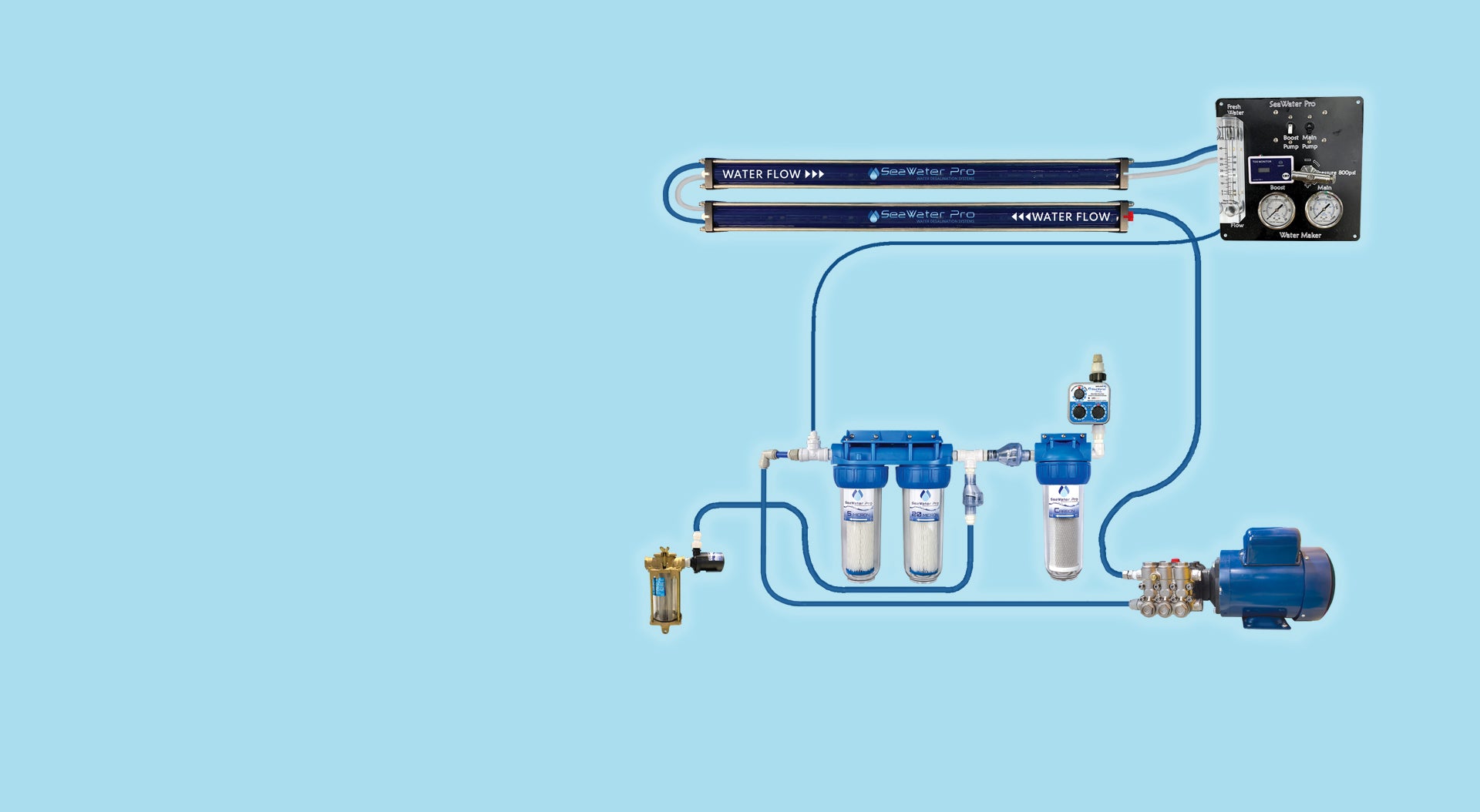
Don't Plan Your Trip Around Water.
Enjoy the purest water without limitations - easy and reliable.
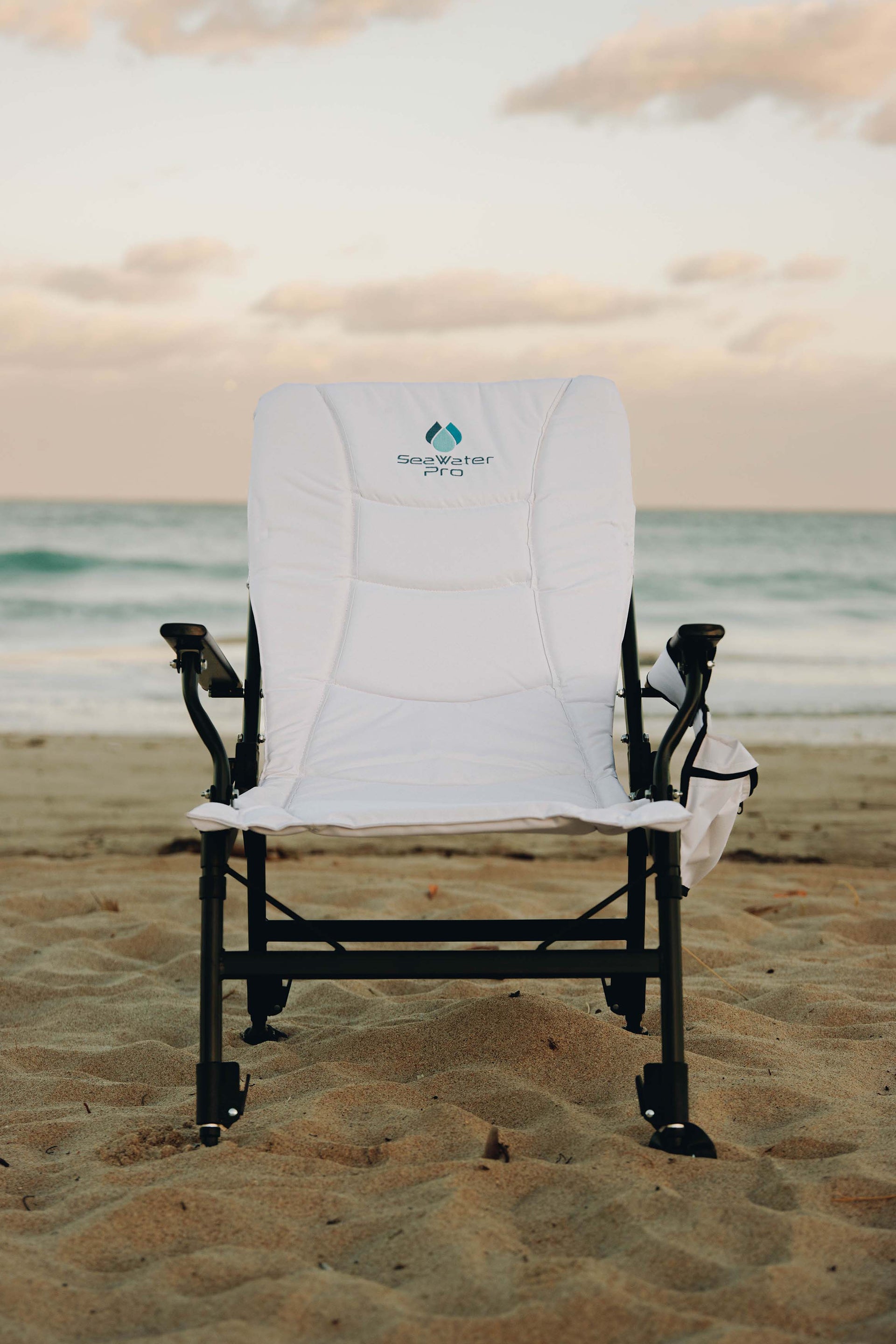
Exclusive SWP Boat Chair
Adventure with comfort and style. Find out how to get yours here!
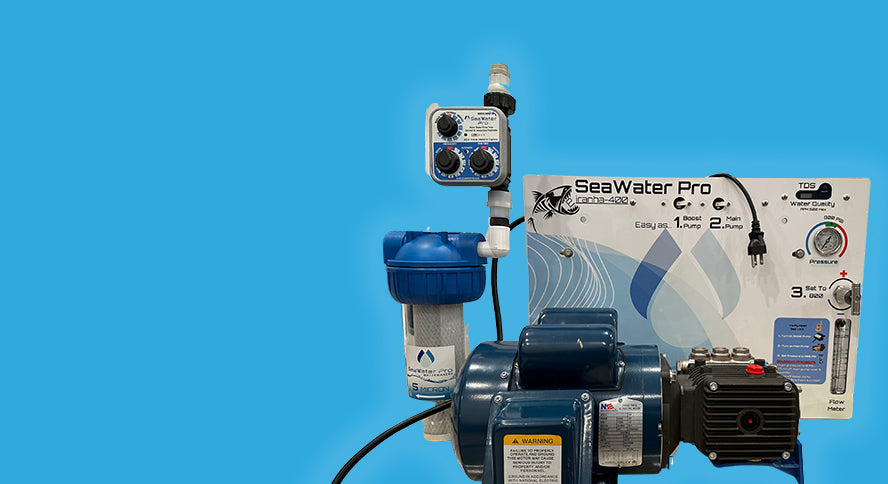
Plug & Play
Pure water. Pure style. Easy compact options.
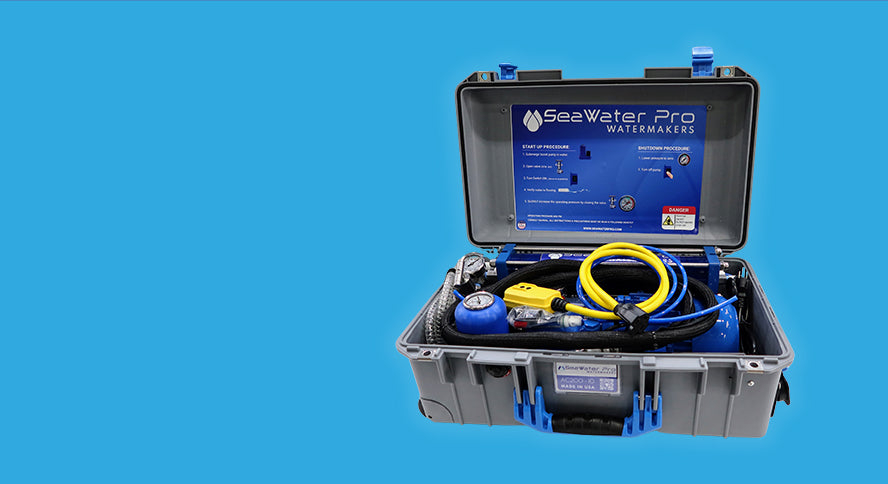
RV or BOAT?
Our mini watermaker has you covered!
Fast Express Shipping.
Industry Best Warranty!
Have a question?
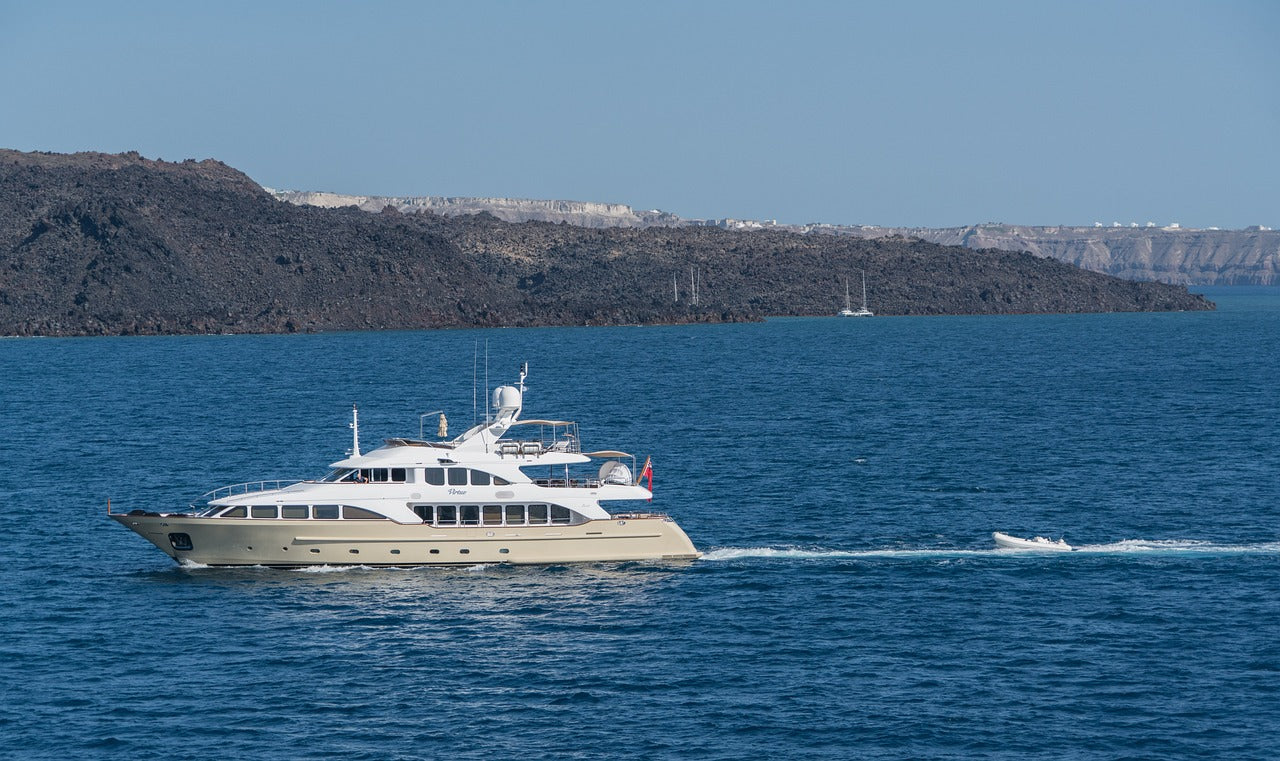
Modular Systems
Available in 17 to 40 GPH - Best for medium to large size vessels.
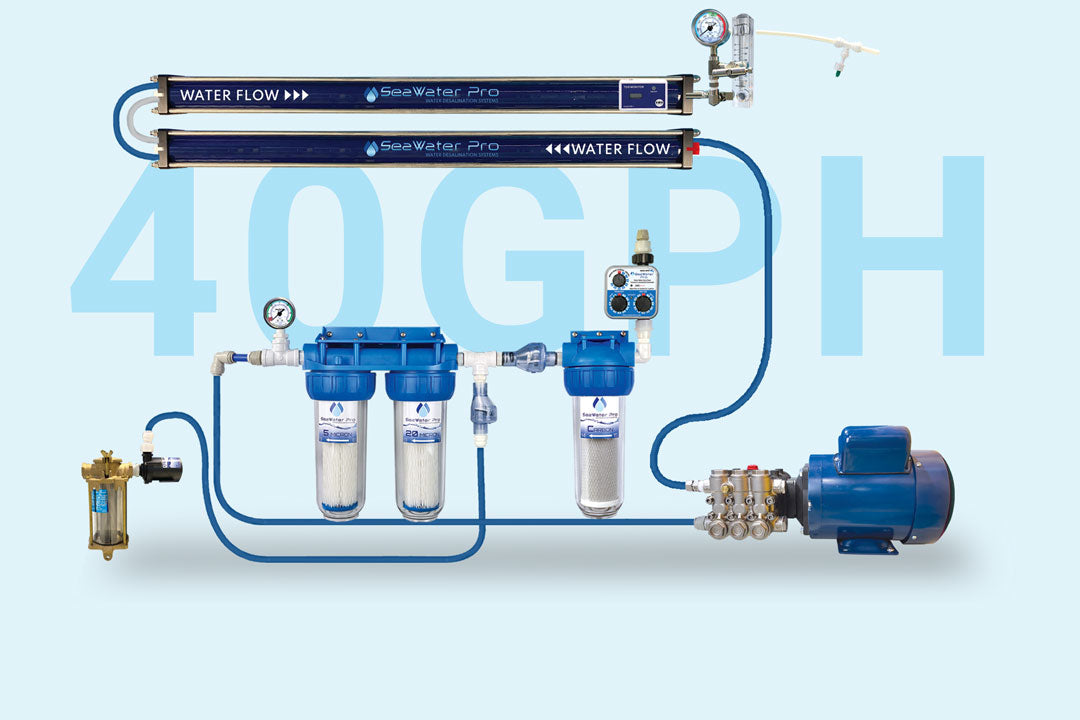
Watermaker: AC 110-220 Volt 970 Watts, 40 GPH Dual Membrane
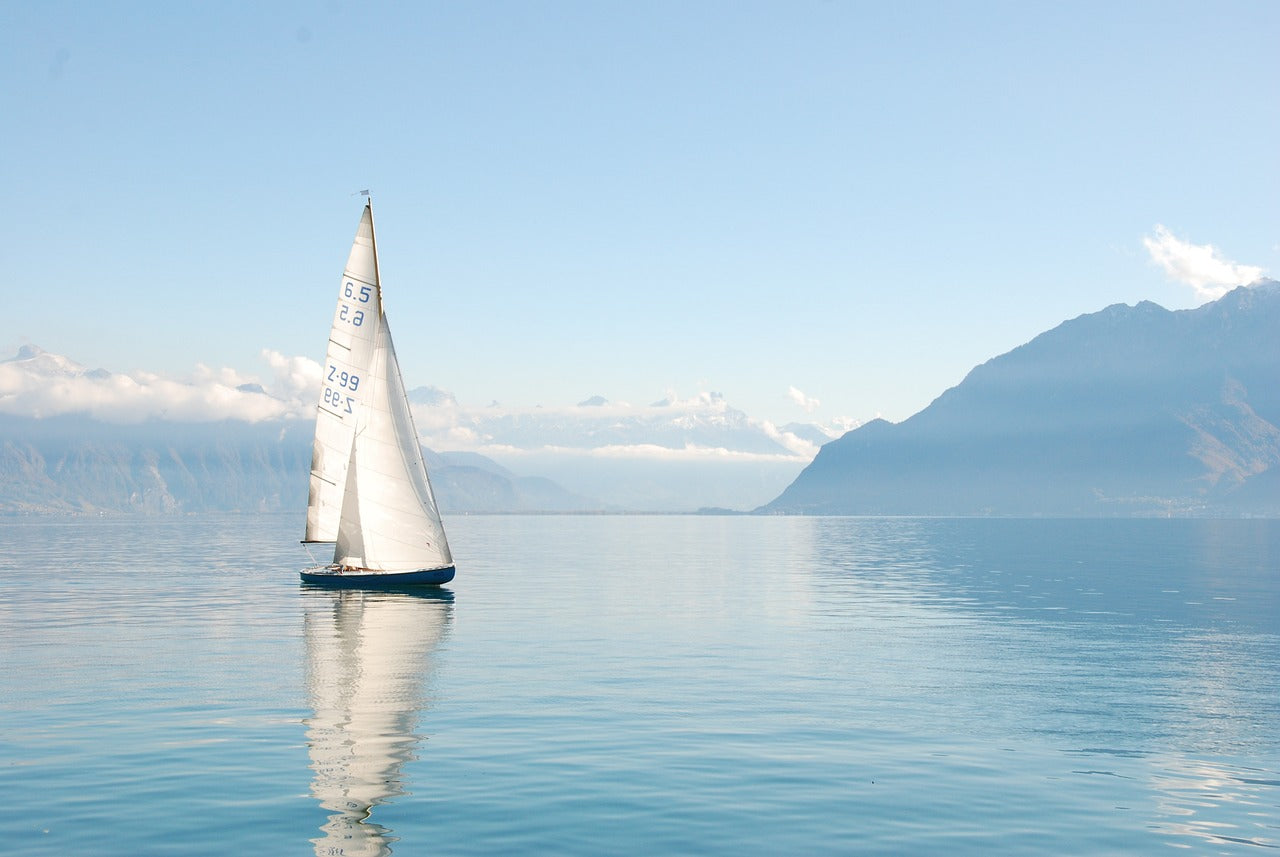
14 GPH - Best for small to medium size vessels.
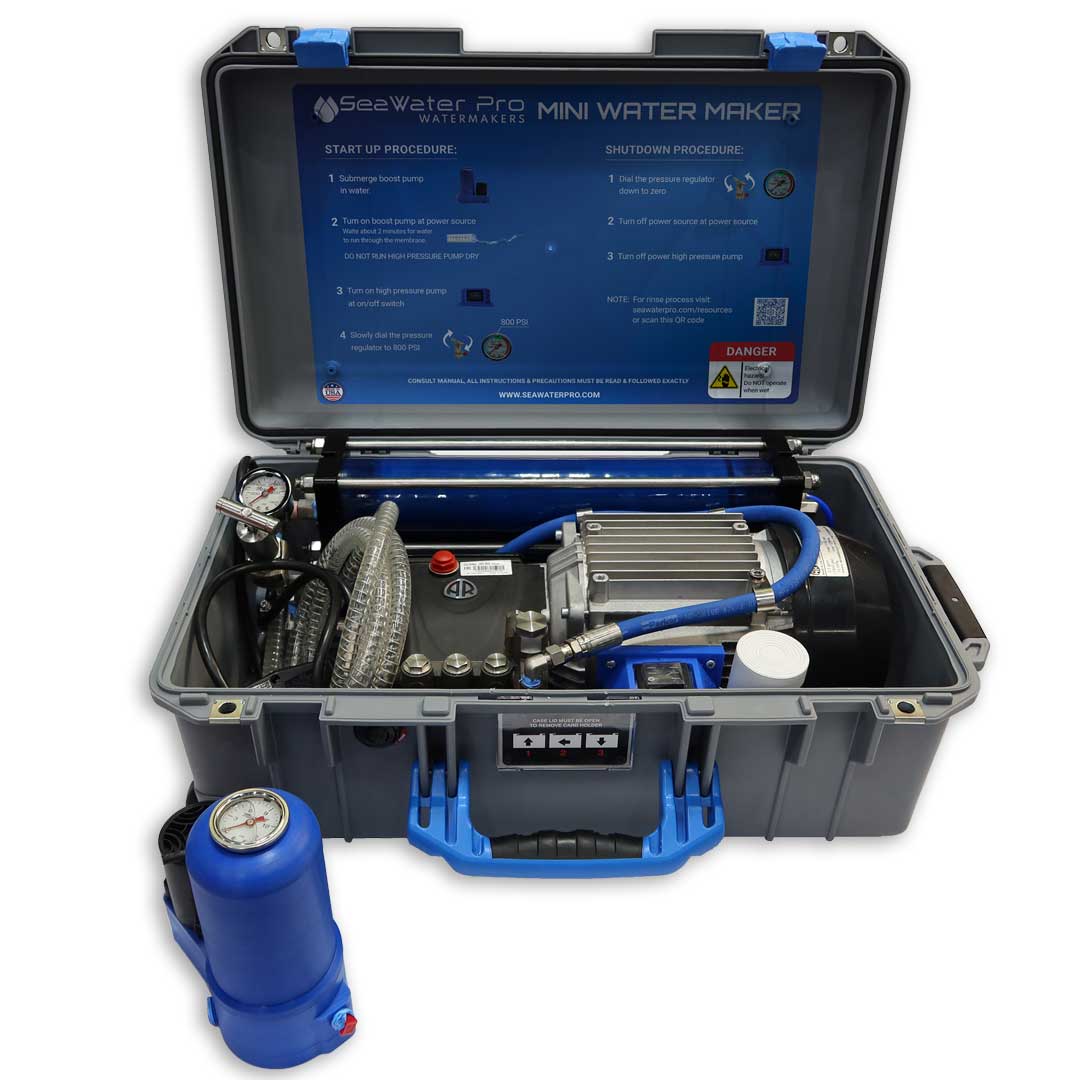
Mini Portable Watermaker AC Powered
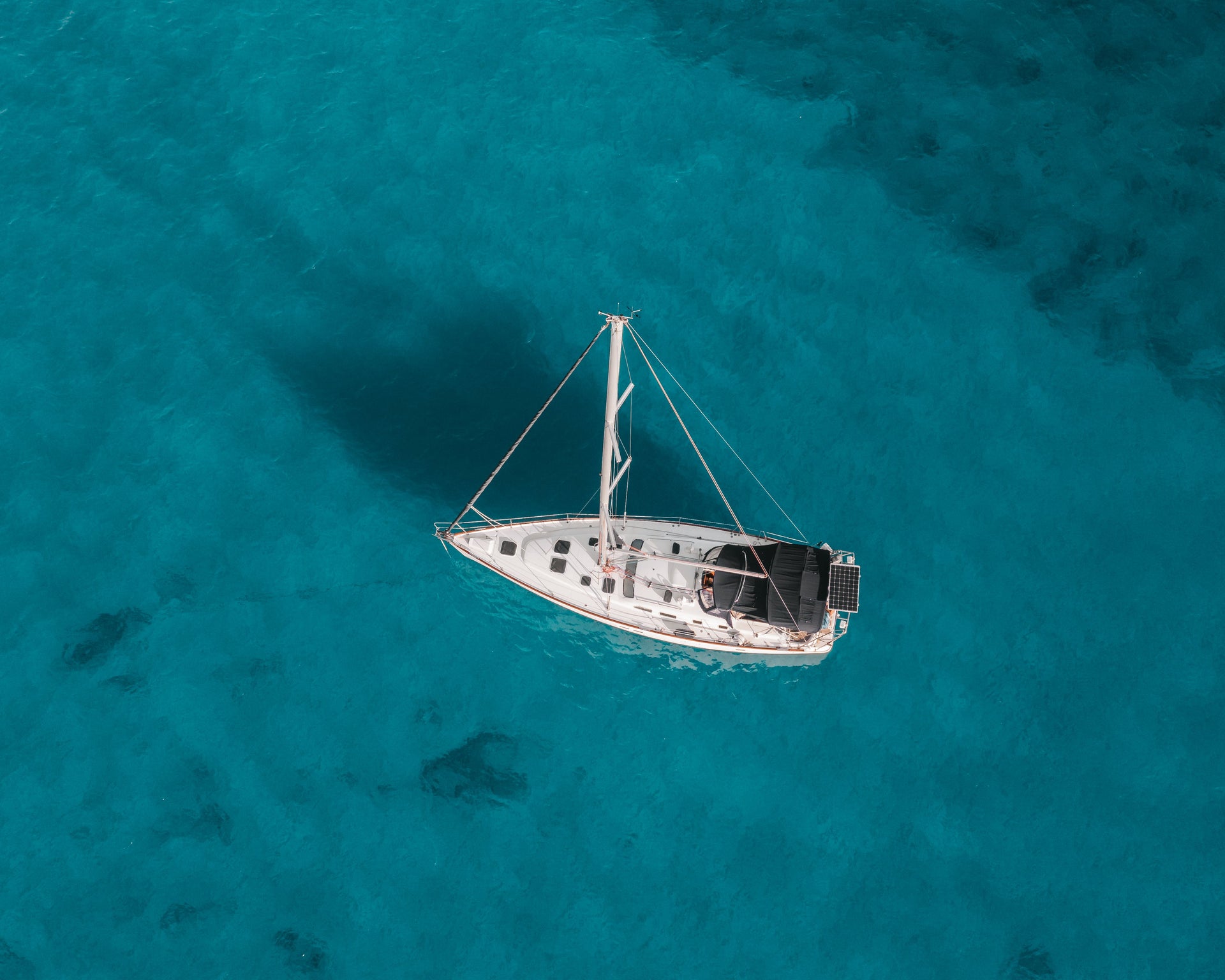
Compact Watermaker
30 GPH - Best for medium to large vessels with limited space.

Plug and Play Piranha 970W/30GPH (22"x16")
Top 4 most popular systems this month.
Looking for the latest and greatest in watermaker systems? Look no further than our Top 4 Bestsellers of the month! Our expertly curated selection features the easiest and most reliable systems to date!
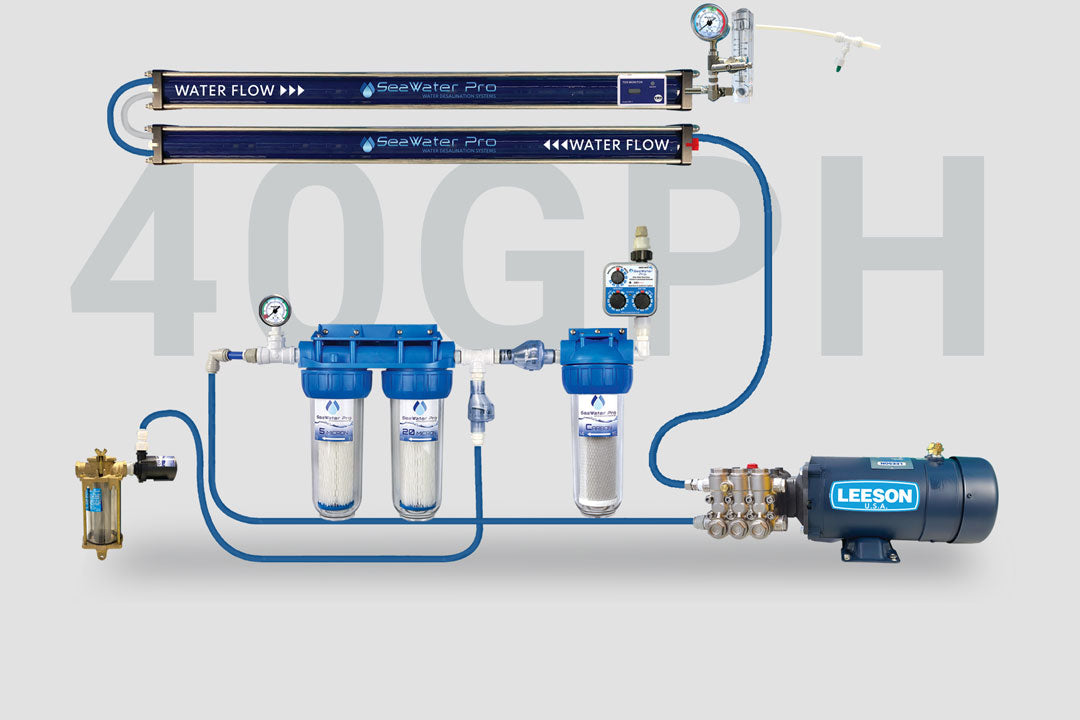
Watermaker: DC 24 Volt 900 Watts, 40 GPH Dual Membrane
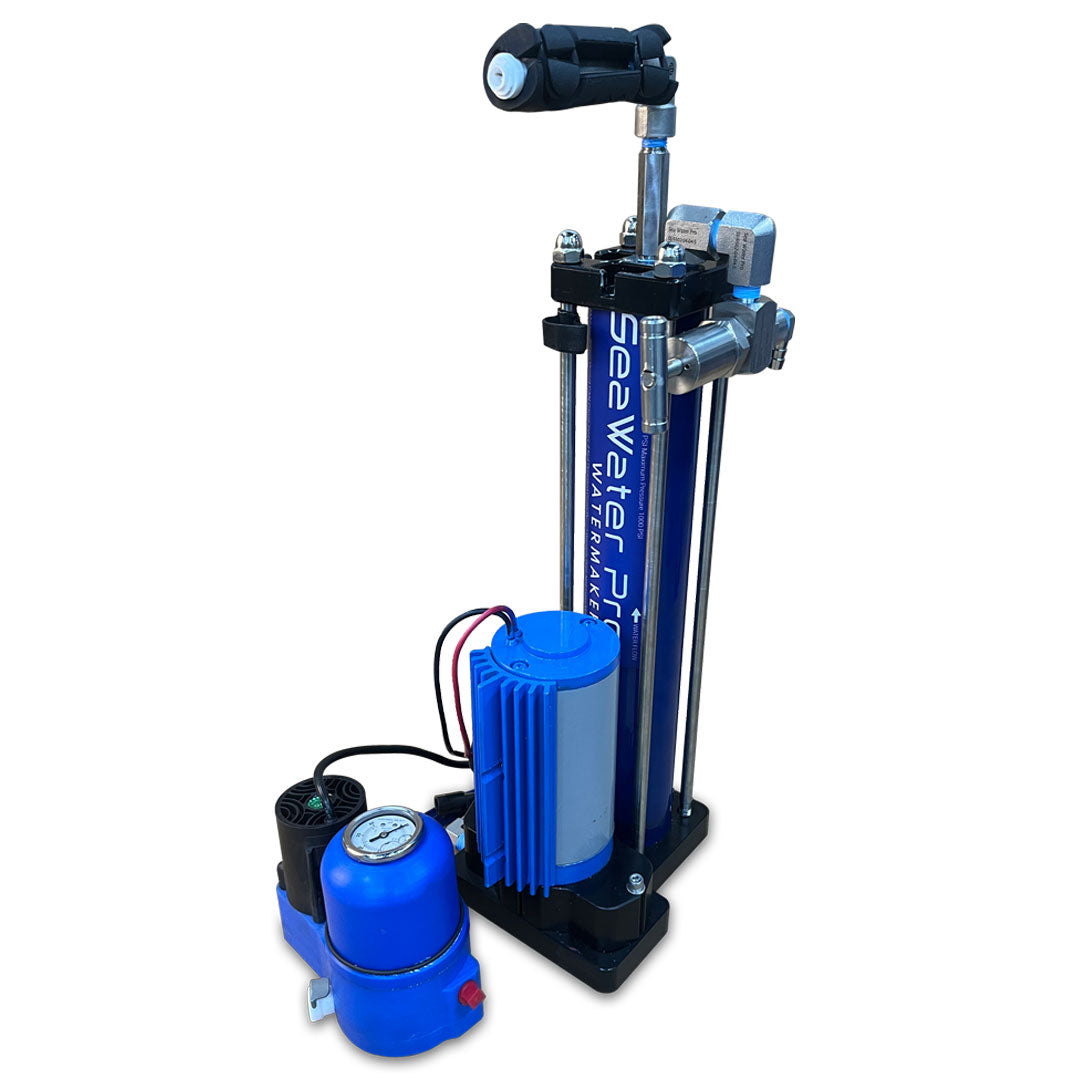
SeaWater Pro Micro Water Maker®
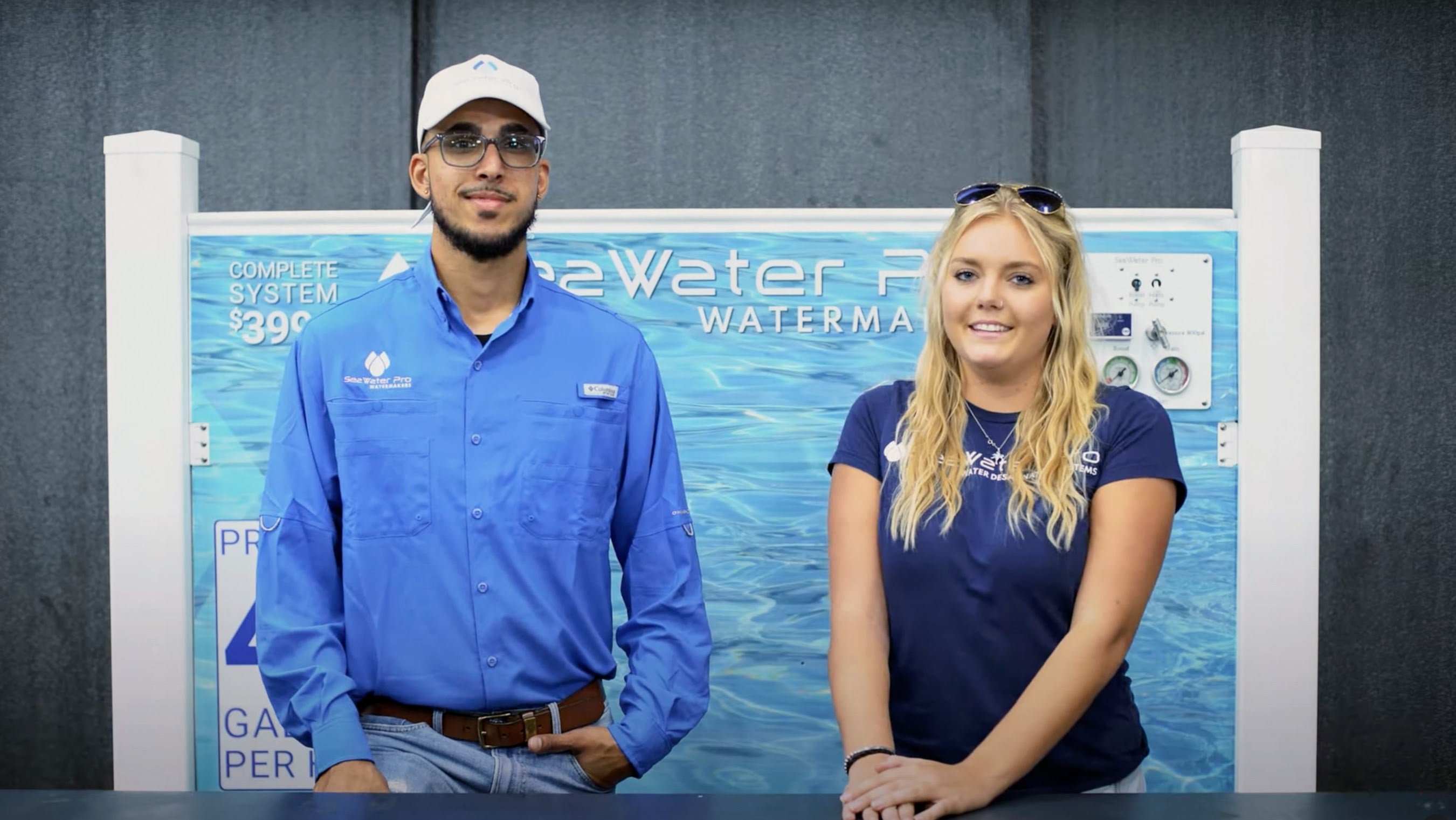
Quick Assembly Video
Swp modular & portable watermakers.
Welcome to SeaWater Pro, the premier provider of high-quality watermakers for boats and portable watermakers for all your marine adventures. Our cutting-edge technology and reliable products will ensure that you have access to clean, purified seawater wherever you go. With our easy-to-use and reliable watermakers, you can say goodbye to bulky storage tanks or worry about running out of fresh water. Our compact and efficient systems are designed specifically for marine use, making them perfect for boats of all sizes. Whether you're cruising the open seas or anchored in a secluded cove, our watermakers will provide you with a steady supply of fresh, drinkable water. At SeaWater Pro, we understand the importance of safe and clean drinking water while at sea. That's why our portable watermakers are equipped with advanced filtration systems that remove harmful contaminants and bacteria. Look no further than SeaWater Pro for your next, most reliable boating adventure investment!
Customer Installations Gallery
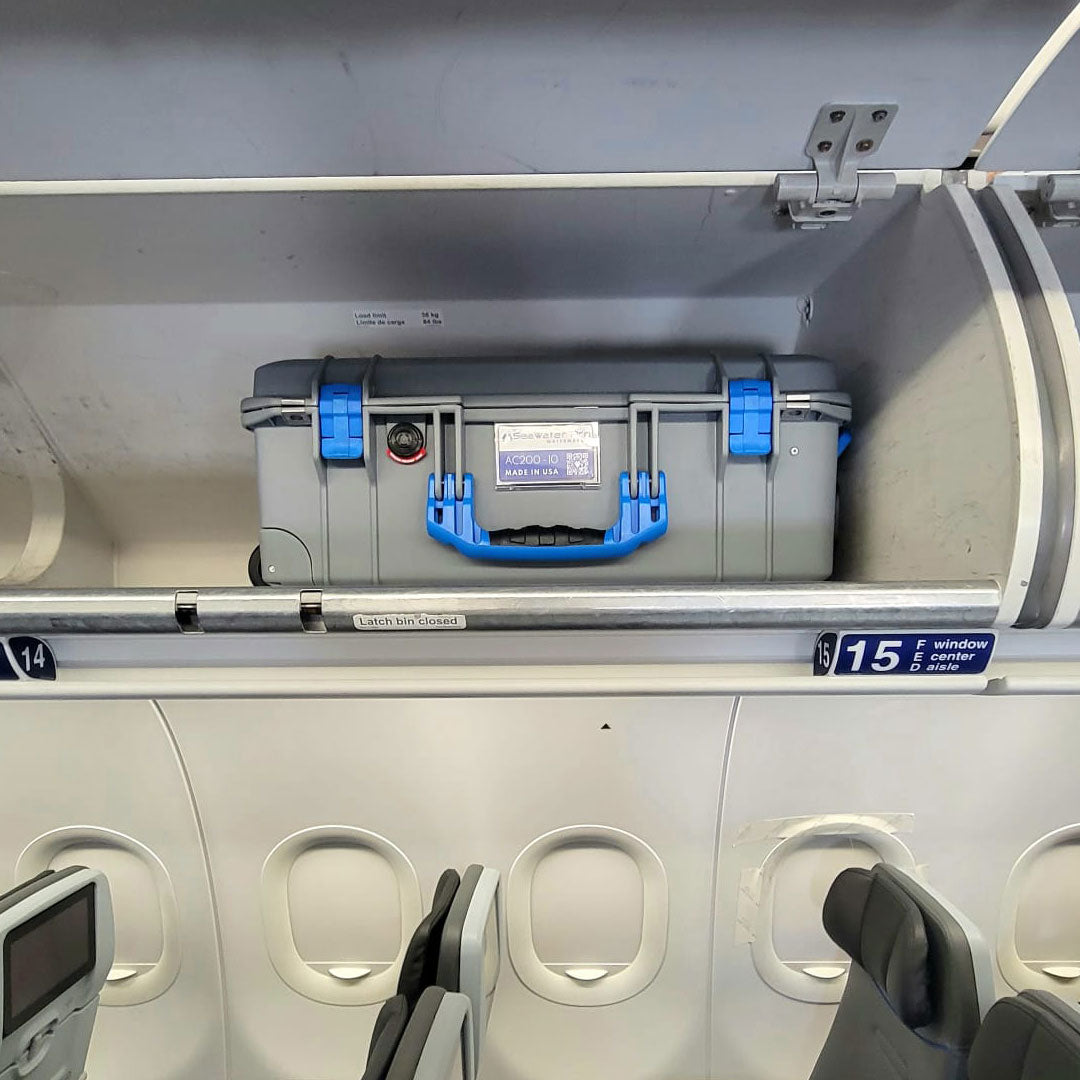
Latest Articles
Charting your course: your first steps into the exciting world of the sea industry, perks of staying hydrated with a portable watermaker while camping, prepping your boat for hurricane season with seawater pro, how do i know which seawater pro watermaker i'll need for my boat.
- Identifying which power source you'd like to run the system. AC or DC power?
- Determine how many gallons per hour will you need to maintain your lifestyle, 17 or 40 GPH.
How much does each SeaWater Pro System weigh?
Every modular watermaker ships in 2 boxes: The first Box is 48 x 12 x 12, 60 lbs. and the second is 24 x 12 x 12, 37 lbs.

Can I install a SeaWater Pro system myself?
Yes! We have videos and instructions for our customers on the resources page .
Do I need a control panel?
Do I need a control panel? Click to watch video
How do I rinse my system after I use it?
Rinse Timer Setup Guide Click to learn more about using your system's rinse timer!
How often do I need to pickle my watermaker?
How to pickle my SeaWater Pro system! Click to watch our short video guide.
Your Cart is Empty
But your water tank doesn't have to be :)
- Choosing a selection results in a full page refresh.

Marine and portable watermakers

Our Company
Innovative watermakers since 1998.
Established in 1998 Schenker is a leading manufacturer of high quality watermakers based on an energy recovery system . Our company owns 4 patents for unique small scale energy efficient solutions.
Schenker Benefits
Why choose us.

80% less power consumption
Energy consumption can be reduced up to 80% compared to conventional systems.

Maximum space saving
An ultra thin design is ideal for space restrictions and provides easy access for maintenance.

Battery power supply
Our watermakers are powered directly from batteries without the need of a generator, our products, marine watermakers.
Schenker watermakers are simple, quiet, compact, efficient and fully automatic. A Schenker watermaker will allow you – whether you own a yacht, a sail boat or any vessel – to extend your cruising duration and increase your independency from marinas, thus enjoying more time at sea. Schenker’s three-years warranty is backed up by our international network of sales and service representatives.
Wiki RANGE: GAL/H 7.9"> RANGE: 30 LIT/H
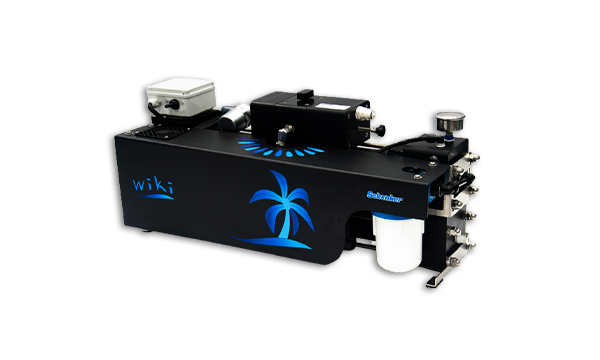
Portable marine watermaker
Zen RANGE: GAL/H 7.9-13.2-26.4-39.6-53-79"> RANGE: 30-50-100-200-300 LIT/H
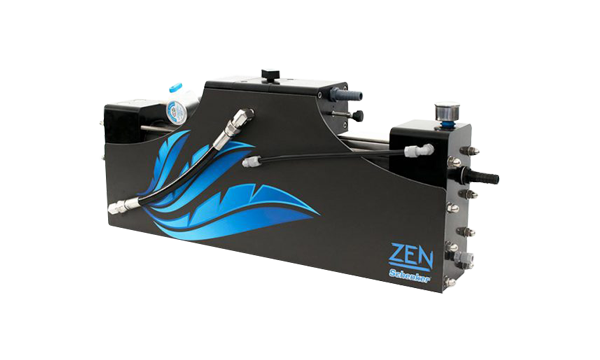
Quiet, small, efficient, inexpensive
Smart RANGE: GAL/H 7.9-15.8-21-26.4"> RANGE: 30-60-80-100 LIT/H
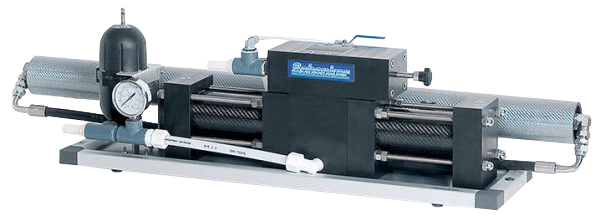
Smart, light and affordable
Modular RANGE: GAL/H 9-15.8-26.4-39.6-61-79-132"> RANGE: 35-60-100-150-230-300-500 LIT/H
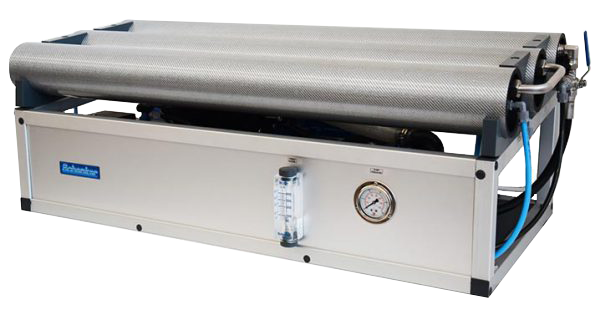
A very compact units for all needs
Our products
Emergency portable solutions.
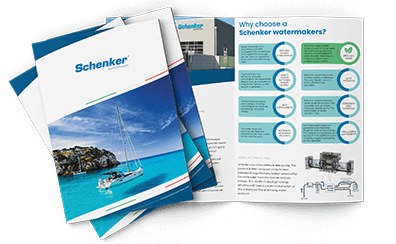
View our products range brochure
Download / View PDF
News & Articles
Share Share Tweet
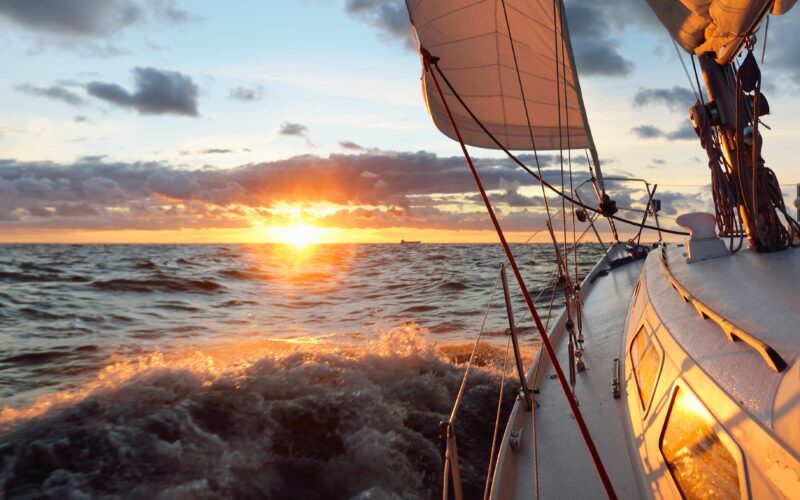
5 reasons why you should buy a nautical watermaker
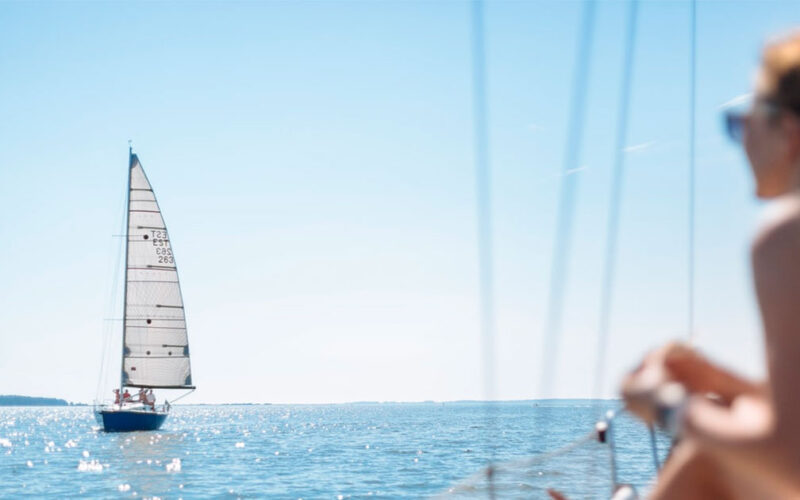
Schenker watermaker benefits: everything you should know
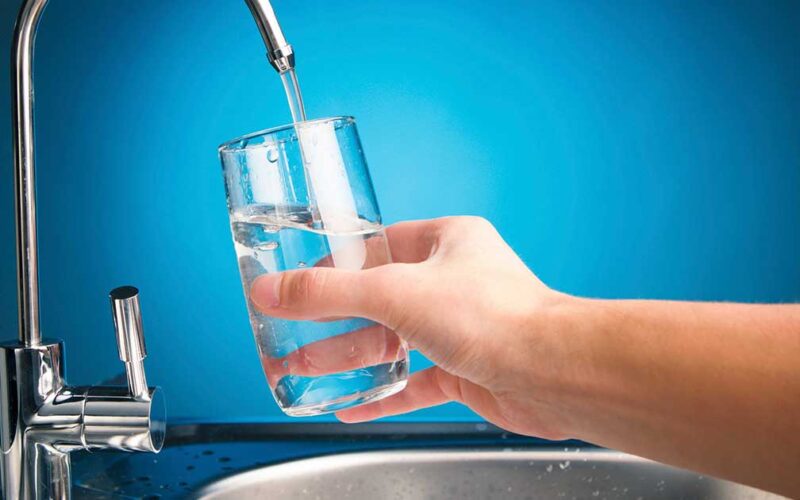
Water purification system: a new eco-product by Schenker Watermakers
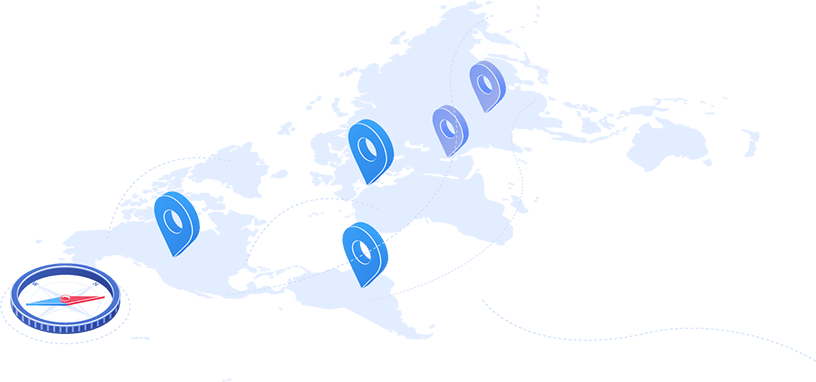
Worldwide dealers
Find schenker dealers near you, send us a message.
Name (required)
Email (required)
Select Your Country (required)
Aruba Afghanistan Angola Anguilla Isole Åland Albania Andorra Emirati Arabi Uniti Argentina Armenia Samoa Americane Antartide Terre Australi e Antartiche Francesi Antigua e Barbuda Australia Austria Azerbaijan Burundi Belgio Benin Bonaire, Sint Eustatius e Saba Burkina Faso Bangladesh Bulgaria Bahrain Bahamas Bosnia Erzegovina Saint-Barthélemy Bielorussia Belize Bermuda Bolivia Brasile Barbados Brunei Darussalam Bhutan Isola di Bouvet Botswana Repubblica Centroafricana Canada Isole Cocos Svizzera Cile Cina Costa d'Avorio Camerun Repubblica Democratica del Congo Congo Isole Cook Colombia Comore Capo Verde Costa Rica Cuba Curaçao Isola di Natale Isole Cayman Cipro Repubblica Ceca Germania Gibuti Dominica Danimarca Repubblica Dominicana Algeria Ecuador Egitto Eritrea Sahara Occidentale Spagna Estonia Etiopia Finlandia Fiji Isole Falkland Francia Isole Faroe Stati Federati della Micronesia Gabon Regno Unito Géorgie Guernsey Ghana Gibilterra Guinea Guadalupa Gambia Guinea-Bissau Guinea Equatoriale Grecia Grenada Groenlandia Guatemala Guyana Francese Guam Guyana Hong Kong Isola Heard e Isole McDonald Honduras Croazia Haiti Ungheria Indonesia Isola di Man India Territorio britannico dell'Oceano Indiano Irlanda Iran, Repubblica Islamica di Iraq Islanda Israele Italia Giamaica Jersey Giordania Giappone Kazakhistan Kenya Kirghizistan Cambogia Kiribati Saint Kitts e Nevis Corea, Repubblica di Kuwait Laos, Repubblica Popolare Democratica del Libano Liberia Libia Santa Lucia Liechtenstein Sri Lanka Lesotho Lituania Lussemburgo Lettonia Macao Saint Martin (Francia) Marocco Monaco Moldavia Madagascar Maldive Messico Isole Marshall Macedonia, ex Repubblica iugoslava di Mali Malta Myanmar Montenegro Mongolia Isole Marianne Settentrionali Mozambico Mauritania Montserrat Martinica Mauritius Malawi Malesia Mayotte Namibia Nuova Caledonia Niger Isola Norfolk Nigeria Nicaragua Niue Paesi Bassi Norvegia Nepal Nauru Nuova Zelanda Oman Pakistan Panama Pitcairn Perù Filippine Palau Papua Nuova Guinea Polonia Porto Rico Corea, Repubblica Popolare Democratica di Portogallo Paraguay Palestina, stato della Polinesia Francese Qatar Reunion Romania Federazione Russa Ruanda Arabia Saudita Sudan Senegal Singapore Georgia Meridionale e Isole Sandwhich Meridionali Sant'Elena, Ascensione e Tristan da Cunha Svalbard e Jan Mayen Isole Solomon Sierra Leone El Salvador San Marino Somalia Saint Pierre e Miquelon Serbia Sudan del Sud Sao Tome e Principe Suriname Slovacchia Slovenia Svezia Swaziland Sint Maarten (parte olandese) Seychelles Siria Isole Turks e Caicos Ciad Togo Tailandia Tagikistan Tokelau Turkmenistan Timor Est Tonga Trinidad e Tobago Tunisia Turchia Tuvalu Taiwan Tanzania Uganda Ucraina Isole Minori degli Stati Uniti d'America Uruguay US East Coast US West Coast Uzbekistan Città del Vaticano Saint Vincent e Grenadine Venezuela Isole Vergini Britanniche Isole Vergini Americane Vietnam Vanuatu Wallis e Futuna Samoa Yemen Sud Africa Zambia Zimbabwe
Message (required)
Security check (required)
Dimostra di essere umano selezionando camion .
Pursuant to and for the purposes of articles art. 7, 13 and 15 of EU Regulation 2016/679 I declare that I have read the privacy policy of this site and consent to the processing of personal data to receive the answer to my request.*
Main Office
RetireFearless
Best Watermakers for Sailboats
Having the best watermaker for sailboats on board is one of the first and most important stages toward being sustainable and self-sufficient.

October 17, 2023
This article may contain affiliate links where we earn a commission from qualifying purchases.
With a watermaker, you'll always have access to fresh drinking water while sailing, even in remote locations. The majority of the models are well-built and have cutting-edge technology that make them efficient, dependable, and simple to install, use, and maintain.
We have shortlisted some of the best watermakers for sailboats. These include, The Ultra Whisper, EchotecWatermaker, Spectra KatadynPowerSurvivor, Village Marine - Little Wonder Series, and Ventura 150 Watermaker.
So, when it comes to selecting the best watermaker for your yacht, it may all boil down to what works best for you in terms of power consumption, efficiency, and the amount of water generated, among other factors.You may stay off the radar for as long as you like with the right watermaker, and you'll never run out of water, which is crucial for enjoying your sailing excursions.
After conducting our research and speaking with some experts in the industry, we have put together this guide to help you learn more about the best watermakers for sailboats.

Table of Contents
Best Watermakers for Sailboats – A Complete Guide
Trawlers, long-range boats, and yachts have seen a recent spike in interest in the marine business. It's reasonable that an off-grid,long-range, on-the-water life would be more enticing now than ever before. When preparing your boat for the long term, it's crucial to think about the most sustainable solutions, and having an appropriate supply of freshwater is sometimes disregarded. While most boats in this group have built-in freshwater tanks, the tank's capacity is often severely limited.
Let's have a look at some of the top watermakers now on the market.
The Whisper Ultra

Sea Recovery’s Ultra Whisper is by far one of the greatest watermakers currently available on the market, with limited electrical options that can work on either DC or AC. This watermaker is not only silent, but it also has an autonomous functioning that requires very little user intervention.
Since it can serve as an effective water supply, this watermaker is suitable for small powerboats and sailboats.When compared to other models, this model promises a 75 percent reduction in power use.
- Water output that is smooth and quiet
- Ideal for small vessels, it can produce up to 2,280 liters per day
- It conserves energy
- It might not be ideal for huge vessels
Watermaker by Echotec

Look no further than the Echotec if you want a watermaker that can create 60 liters per hour with no care other than changing the filters. This type is built for high reliability and simple customer installation.
This watermaker is constructed of high-quality components that can endure the severe sea environment, making it one of the most robust watermakers available. This is essentially a line of modular watermakers that range in power from 12-volt to 24-volt DC. They provide an energy economy, a computerized energy recovery system, and unwavering dependability to guarantee that you never go out of drinkable water while at sea.
- Low energy consumption
- Cost-effective
- It has a very slow speed
- Not recommended for large vessels
PowerSurvivor Spectra Katadyn

The Spectra Katadyn PowerSurvivor is likely the cheapest watermaker on the market as a compact and energy-efficient watermaker. We're talking about a desalination system for your sailboat that only uses 4 amps. It can create 1.5 gallons of clean drinking water each hour, which is a good yield for a small watermaker.
It's also one of the most mobile watermakers on the market. You have the option of installing it temporarily or permanently in case you need to move it. This portability is especially important if you're searching for a model that can fit into even the tiniest of spaces.
Its simple but tough design ensures that it can work well even in the harshest sea environments. When it comes to power, this is the only type on the market that can switch to a hand-operated mechanism or manual energy if there is a power outage.
- Lightweight and portable
- Rugged construction for use in hostile marine settings
- Effective and dependable
- If there is a power outage, you can switch to manual power
- Ideal for off-grid sailing
- The semipermeable membrane is quickly damaged by gasoline or diesel
Little Wonder Series by Village Marine

The Village Marine Little Wonder Series has everything you need, whether you're searching for a watermaker for your little sailboat or a watermaker that can effectively serve those large boats. This type is designed for seasoned sailors seeking a variety of capacity options. This watermaker is only 69 pounds in weight, but it can produce approximately 180 gallons of fresh drinking water every day.
This type is one of the most efficient and cost-effective watermakers on the market, thanks to its high-pressure pump with low RPM. Not only that, but this watermaker has corrosion-resistant characteristics and is one of the most serviceable watermakers on the marketplace. It's dependable, quiet, and portable, which are all fantastic qualities in a watermaker.
- Simple to operate
- Corrosion-resistant
- Simple to maintain
- Quiet and adaptable
- There are no automatic adjustment controls
Watermaker Ventura 150

This watermaker is one of the most multifunctional on the market. It has the ability to run on both electrical and renewable energy. This model is lightweight and energy-efficient, and its small and modular design makes it a fantastic choice if you need a watermaker that's simple to operate and install in tight areas.
The Ventura 150 watermaker is extremely efficient, producing over 6 gallons of water per hour, making it ideal for tiny boats. The controller on this yacht watermaker allows you to control and monitor the unit from afar. It also includes an auto-store feature that will flash the system every five days.
Despite its potential to create around 150 gallons of water each day, this watermaker is silent and surprisingly compact. It also allows you to choose between an automated manual and a manual model.
- Extremely adaptable
- It is possible to employ both electrical and renewable energy sources
- It is silent and smooth
- It is both small and light
- Analog controls are available on the manual model
Marine Watermakers: The Fundamentals
Reverse osmosis is used in marine watermakers to take in seawater and produce clean, drinkable water suited for any of your live-aboard demands. The newly created freshwater is then poured into your vessel's existing water tank, while the remaining "brine" is dumped overboard. The manner in which the water is pushed varies among most maritime watermakers. Typically, the water is either electrically propelled (AC or DC) or powered by the motor of your boat. The filtration procedure will be slower and the incoming seawater will be saltier and colder, so sailors may need a more powerful system than those fishing down in the Caribbean.Watermakers are available in a variety of shapes and sizes, with modular models best suited for smaller vessels because the sections may be "stashed" in any available extra cargo space.
With the appropriate Watermaker, the ocean may provide an almost limitless supply of fresh, clean drinking water to keep you hydrated on your offshore sailing adventures.When preparing for long-distance journeys, many sailors invest a lot of time and money on various aspects of the sailboat, including as the generators, electronics, engine, and sails.
While there's nothing wrong with that, they frequently forget one critical aspect of human survival: having enough fresh drinking water.Whether you have fresh water to drink in tanks on your yacht or plan to cruise in regions where clean drinking water is readily available, the annoyance of having to return to the dock to fill the water tanks might be overwhelming, which is exactly why you should look for the best watermakers for sailboats.
Watermakers, like many other navigational technologies, have progressed greatly in recent decades to become more efficient and reliable. Thus, they are no longer a luxury, but a necessity on the sailboat. Even better, watermakers have become reasonably priced and are designed to keep you hydrated when exploring locations without access to clean, fresh drinking water.
In this post, we'll look at how watermaker systems function, the benefits they provide, and the best sailboat watermakers currently available. You should be able to select the best watermaker for your yacht after reading this article.
To be honest, many sailors do not require the use of a watermaker. If you plan to sail near the coast, there's a good chance you'll be able to get fresh, clean water right off the dock. However, if you've always wanted to go off the grid and sail to far-flung corners of the globe, this can be a constraint.
A watermaker makes great sense to most seafarers with that in mind. During your cruise, you won't have to be worried about transporting tons of water for heating and drinking. You won't have to think of freshwater as a limited resource that must be conserved till the next port.You can easily cross the ocean without worrying about running out of water with a good watermaker.
A watermaker ensures a constant supply of fresh, clean water, keeping everyone hydrated and healthy. You may clean the water whenever you want, and all you have to do is remove the filter once in a while to keep it running smoothly. In essence, a watermaker is one of the most crucial pieces of sailboat equipment, thus having one installed is critical if you're a serious sailor.
Modern Marine Watermakers
To create pure, drinkable water from seawater, modern marine watermakers rely on the reverse-osmosis concept.Seawater is driven through a semi - permeable barrier that only permits freshwater molecules to flow through it, but not salt, germs, or any other organic substance, throughout this process. The newly purified fresh water is then piped into the sailboat's water tanks, with the remainder (brine) being thrown overboard.
Even though the sort of pump used and how it is powered varies amongst maritime watermakers, this is one of the most crucial aspects in any watermaker. Water can be pumped electrically or straight from the boat's motor in most circumstances. If your yacht has an AC generator or alternator, using the AC output to run the watermaker directly makes a lot of sense.
If you use renewable energy sources such as solar or wind, you can opt for DC-powered devices. You can also use AC-powered watermakers, but you'll need to purchase an inverter.
Overall, DC-powered watermakers are more effective than AC-powered watermakers because they have a power-saving energy recovery technology (ERS). However, keep in mind that if you're sailing in colder and saltier places, your energy usage may be fairly significant. This is because the water filtration procedure in certain places may be a little slower. As a result, if you expect to sail in colder, saltier places, you should make investments in a higher-powered watermaker system than if you plan to sail in warmer, less salty areas.
In case of a motor-driven watermaker, the high-pressure pump should be mounted on the motor so that it can be belt-driven with an automated clutch. If you need a significant amount of drinkable fresh water, a motor-driven watermaker should be your primary choice. This is more efficient than watermakers that are powered by AC or DC. This arrangement has an automatic controller that continuously pumps the water, despite the little engine. Engine-driven watermakers are great for reducing your energy consumption in this regard. When compared to traditional AC or DC-powered watermaker systems, an engine-driven watermaker can save up to 80% on energy consumption.
How to Select the Best Watermaker for Sailboats
When looking for the best watermakers for your yacht, there are numerous aspects to consider. The following are the most crucial factors to consider.
Your Freshwater Requirements
One of the most crucial factors to consider when purchasing a watermaker is your freshwater requirements. How much would be sufficient to keep you going on your sailing adventure? While the amount may vary from one sailor to the next or from one boat to the next, you should think about how many gallons a specific watermaker can create every day. This will assist you in selecting the best watermaker for you; one that will ensure you never run out of water.
Do not misjudge your water requirements, particularly if you plan to sail with children or stay on the boat for an incredibly long time.
Is there enough room on your boat to lodge the sort of watermaker you want to buy? While most watermakers are designed to fit into the tiniest of spaces, you need to evaluate the authentic size of the watermaker to see if you have enough space on your vessel to install it.
Watermakers can be powered by electricity, renewable energy sources like wind and solar (if available), or a combination of the two. When searching for the ideal watermaker, think about how it will be powered and whether or not it will consume little energy, which is a terrific feature. Again, there are engine-driven watermakers, so it's crucial to know exactly what you want.
Maintenance
Watermakers have a bad record for being tough to keep up with. Since components and equipment have improved in recent years, you should choose a model that is simple to maintain. You should utilize the watermaker in attractive water bodies.You should resist using the watermaker in polluted harbors because you may have to replace the filters frequently or perhaps damage the watermaker.
Recent Articles

What Size Sailboat Can One Person Handle?

How To Tie A Sailboat To A Mooring Ball Ring

What Is The Ideal Wind Speed When Sailing?

How To Use a Sailboat Winch

Things You Need To Liveaboard a Sailboat

Types of Sailboat Keels
I'm Michael Moris. I've been sailing my whole life, and it has taken me to places I never imagined. From the Caribbean to Europe, from New Zealand to South America - there's nowhere that hasn't felt like home when you're on a boat!

Trending Articles

How Far Is Havana From Miami By Boat?

Yachting Vs Sailing

Who Is Sailing Doodles?
Subscribe To Our Newsletter
Thank you! You're signed up for our free newsletter!
Oops! Something went wrong while submitting the form
About Our Team
We are a publishing team of licensed Nursing Home Administrators, Nurses, Assisted Living Directors, Health Professionals, Gardeners, and individuals with vast experience with senior living and activities.

©2024 Retire Fearless. All rights reserved.
We can be reached via email at [email protected]
Retirefearless.com is a participant in the Amazon Services LLC Associates Program, an affiliate advertising program designed to provide a means for sites to earn advertising fees by advertising and linking to Amazon. This site also participates in other affiliate programs such as CJ, ClickBank and more, and is compensated for referring traffic and business to these companies.
Facebook Pinterest
KE+ Electronic Engine Controls: Prices are Low – Don't be Slow!

Spectra Watermakers
- Watermakers
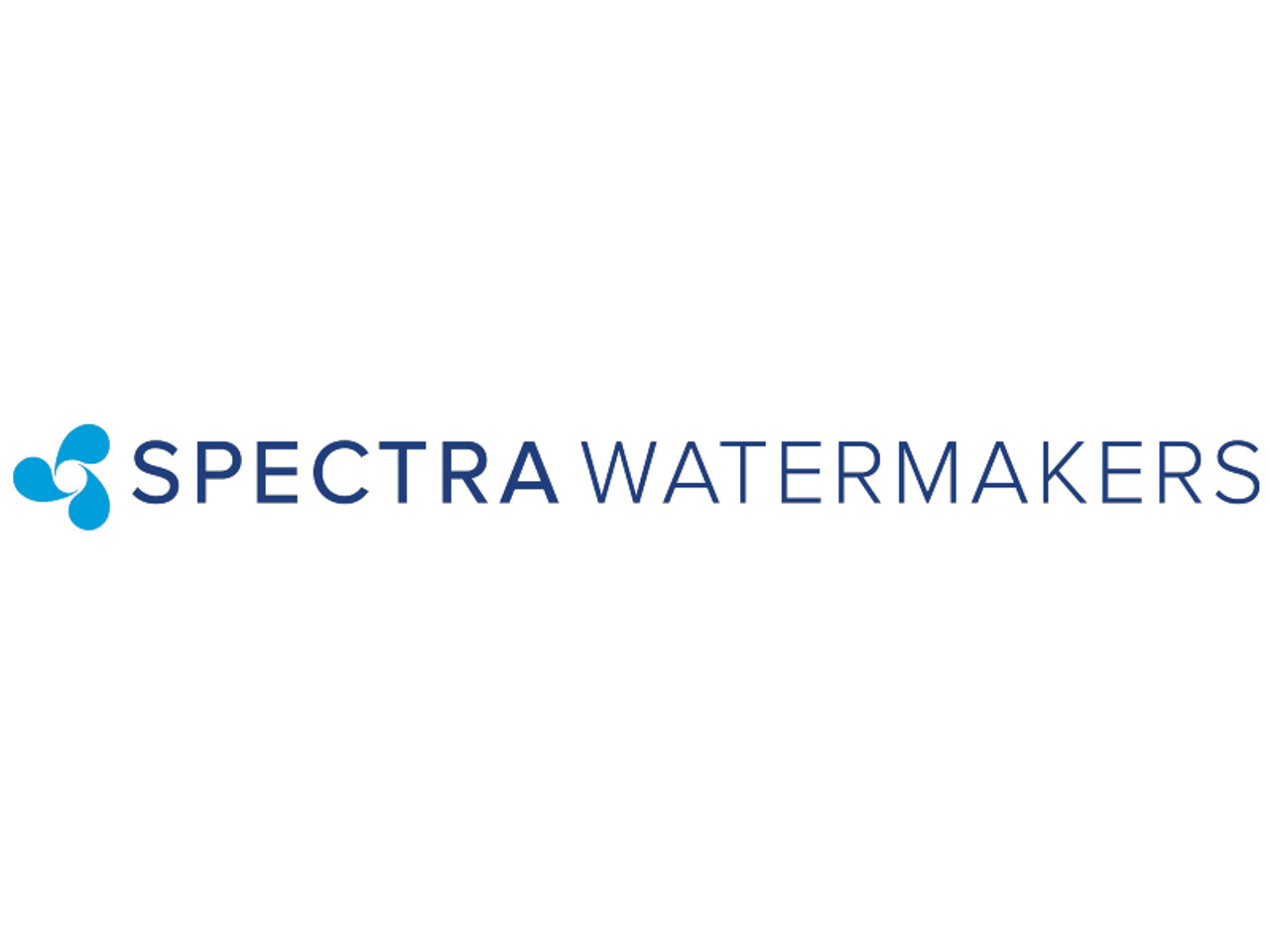
Spectra Cape Horn CH-330R Remote Manual Extreme Watermaker 12V/24V System
Spectra kit-hp-s&oh seals & o-rings kit 15% & 20%.

Spectra KIT-HP-S&O Clark Pump Seal Kit

Spectra Watermakers Catalina 340RS Remote Compact Series 12V/24V System

Spectra Catalina Watermaker Connect Automated 12/24/48V Watermaker (CT-340C)

Spectra ZION for Manual Systems ZION-MAN

Spectra ZION for Automated Systems ZION-AUTO
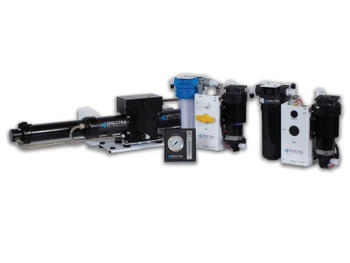
Spectra Cape Horn CH-330 Extreme Watermaker 12V/24V System

Spectra Newport 400 Watermaker Automated Connect Series 12V/24V System

Spectra Offshore Kit for 7%, 10% Clark Pump

Spectra EL-FP-12V Shurflo Pump (12V)
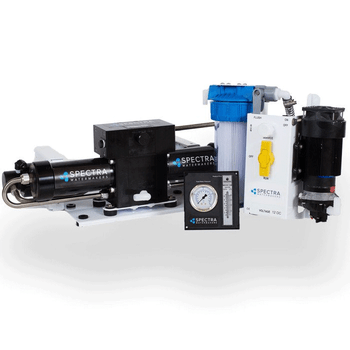
Spectra Ventura 150 Deluxe 12v/24vDC 6.3GPH Marine Watermaker VT150D
- MarketPlace
- Digital Archives
- Order A Copy

Building your own watermaker
Modern technology has brought us many new devices that make the cruising life much safer and easier. Since we are not interested in camping out while cruising, obtaining safe and clean fresh water has always been a major priority, especially overseas. The three most common ways of obtaining fresh water on a cruising boat are: 1) an effective rain collection system, 2) from shore via a hose, or 3) a watermaker. Given reasonable storage capacity and a good filtration system, a high-capacity watermaker is the most efficient — especially if you are a boonies cruiser.
A reverse-osmosis watermaker takes clean seawater and, by pushing it through a specialized membrane (special filter) at relatively high pressure, makes fresh water. This means that no longer do we have to carry hundreds of pounds of extra fresh water just to ensure we don’t run out. Also, we no longer must get up in the middle of the night to catch rainwater, or search out places ashore where we can jerry-jug water from sometimes expensive or suspect sources.
Watermakers suitable for use on a cruising boat can be obtained from a number of sources depending on your budget and tolerance for electronics gadgetry. But they all do the same thing: make fresh water from seawater. We think that if you are going to have a watermaker aboard, it should have bulletproof — and mainly mechanical — equipment with minimal electrical and electronic parts; use commonly available (not proprietary) components; make the most water practical in the shortest time (40 gallons per hour is our choice); and be repairable with onboard spares, tools and skills.
As an example, we use about 50 gallons of fresh water a week for daily cooking, drinking, showering and cleaning. A 40-gph watermaker with two 40-inch membranes can make that in one and a half hours with setup and flushing time included. Smaller units can take significantly more time to do the same work, thereby seriously affecting a cruiser’s free time.
An engine-driven pump Because the power needed to run this volume through the membranes is more than 2 hp and a 12V motor won’t handle that, we have chosen to belt our watermaker pump to our main engine on our last two boats. This is similar to an alternator arrangement. You can drive a watermaker pump with a generator, but using only a generator puts another expensive, sometimes cantankerous and complicated piece of mechanical/electrical equipment between you and fresh water. If the generator fails, as they sometimes do, you are back to spending hours per week manually collecting fresh water from rain or shore.
We most often run the watermaker when underway and moving the boat. Infrequently, we run it at anchor and sometimes just flush it with fresh water to satisfy the once-a-week run requirement that prevents biologic buildup on the membranes.
We average less than 10 hours per year in the tropics using the engine just to operate the watermaker.
If you decide to make your own watermaker, there are several sources of information on the Internet, including my guide. Fifteen years ago, it took me quite a bit of time to engineer the specifications, develop a parts list, and then find and purchase the equipment. By that time, I had seen two successful DIY units, so I knew it could be done. I used a mix of some used and some new parts, mainly because I was on a tight budget. Since then, I have refined the unit somewhat, installed two units on our boats and helped several other cruisers do their own using my information.
Extensive engineering details are on our website under “CSY Workshop,” and we have a PowerPoint slideshow in our “Presentations” section. There is also a Seven Seas University webinar I did for SSCA a couple of years ago, with the slideshow narrated.
Better than the WHO standard My first unit on Soggy Paws , our CSY, was still in service after eight years when we sold the boat in 2016. It had the original pumps, membranes and fittings, and was belted to our 60-hp Perkins. It was still producing fresh water that tested to about 250 ppm (parts per million solids content). The World Health Organization standard is 500 ppm.
Because I was careful never to run my watermaker in dirty or silty locations, in addition to having two pre-filters, I never had to clean the membranes in eight years.
The second installation on our catamaran is now belted to a 27-hp Yanmar 3GM30. It has a different mounting configuration, and after four years of use still produces water at less than 200 ppm. There are many ways to mount a pump to an engine; you just need to be able to tightly tension the belt drive around the crankshaft pulley. You want to use an appropriately sized pulley to run the watermaker at near full rpm from an engine running around 50 percent of its maximum rpm.
Once you have all the parts, any competent cruiser should be able to install a watermaker in a week. It took me two weeks — but then I never claimed to be competent, just thorough.
As with ground tackle, we think bigger is better, within reason. So if you don’t have a watermaker yet, consider easing your cruising workload and making the crew happy by obtaining a watermaker. Then you can wash dishes in fresh water, take freshwater showers every day, and not worry about using too much water — just like normal people.
Dave McCampbell is a retired U.S. Naval diving and salvage officer with over 40 years’ cruising and eight sailboats’ worth of maintenance experience. He and wife Sherry, currently cruising in Southeast Asia, spent eight years crossing the Pacific via Easter Island, Hawaii and Micronesia. Prior to that, they circumnavigated the Caribbean over four years. Their most recent excursion was a 7,000-nm journey from the Philippines to the lower Solomons via eastern Indonesia and Papua New Guinea. Four years ago they sold Soggy Paws , their CSY 44 monohull of 19 years, and moved to the “enlightened side,” purchasing a new Soggy Paws , a St. Francis 44 catamaran. Their extensive website is at SVSoggypaws.com .
By Ocean Navigator
DIY Watermaker Guide: How to Build Your Own System for Clean, Drinkable Water
Introduction.
We all know how vital clean, drinkable fresh water is for survival. But what if you could take matters into your own hands and learn how to make your own system of clean fresh water with a DIY Watermaker? Imagine having access to unlimited, drinkable water from the comfort of your own home. With the right materials and components, you can create a DIY Watermaker that will provide you with clean water for years to come. In this guide, we’ll cover all the necessary steps to build your very own DIY Watermaker System – from researching potential costs savings and gathering materials to testing and maintenance tips. With this guide in hand, you can have access to safe drinking water anytime, anywhere. So let’s get started!
What is a Watermaker?
I remember the first time I heard about a watermaker. I was boating with friends, and someone had one of these seemingly magical contraptions. It looked like a small, portable water maker that could turn saltwater into drinking water. I was amazed—and even more so when they told me it was a DIY project! While it seemed daunting at first, it didn’t take long to realize just how easy and rewarding a DIY Watermaker project can be. And the cost saving compared to buying an off the self system makes this the cheapest option available
A Watermaker is simply a device that uses reverse osmosis technology to filter out salt and other contaminants from salt water or fresh water, leaving you with clean, drinkable water. It works by pushing the source water through a series of filters and membranes that remove impurities before storing the filtered product in a container for later use. Building your own system isn’t as complicated as it might seem—all you need are the right materials and components, some patience, and this guide to get started!
A watermaker has four main components. These are a seawater intake, a high-pressure pump, a reverse osmosis membrane, and a freshwater output. The seawater intake filters out large debris or particles. The high-pressure pump forces the seawater through the reverse osmosis membrane. The reverse osmosis membrane removes impurities from the seawater. The fresh water output stores clean, drinkable water.
Before beginning, it’s important to consider if there is sufficient power available for a water maker, as it consumes a significant amount of electricity. It may be necessary to ensure there are enough solar panels and lithium batteries to handle the load, particularly on smaller boats where adding additional solar panels may not be feasible.
Buy vs DIY Watermaker Build
When considering whether to purchase or construct a watermaker, it is important to acknowledge that both options have advantages and disadvantages. Determining which option is best for you will depend on factors such as budget, technical ability, and water usage requirements.
When contemplating building a watermaker, it is important to possess technical knowledge and DIY skills. While constructing a watermaker can be satisfying, it can also be laborious and difficult. Conversely, purchasing a watermaker is a convenient way to obtain a high-quality product, but it may be expensive.
Here are some of the pros and cons to consider before choosing what path you should take:
Buying a watermaker:
- Convenience: Buying a watermaker means you don’t have to spend time designing, sourcing parts, and building it yourself.
- Quality: Off-the-shelf watermakers are usually designed and manufactured by experienced companies, ensuring that you get a reliable and high-quality product.
- Warranty: Buying a watermaker typically comes with a warranty or guarantee, providing added protection and peace of mind.
- Availability of parts and support: In case of maintenance or repairs, it is often easier to find replacement parts and support for a commercially available watermaker.
- Expense: As mentioned earlier, watermakers can be expensive, and this is especially true if you want a high-quality, high-capacity unit.
- Customization: With a pre-built watermaker, you may have limited options to customize the unit to your specific needs.
Building your own watermaker:
- Cost: Building your own watermaker can save you a lot of money, especially if you use readily available materials and components.
- Customization: Building your own watermaker allows you to tailor the unit to your specific needs, such as capacity, energy consumption, and other factors.
- Satisfaction: Building your own watermaker can be a rewarding experience, providing a sense of accomplishment and pride in your creation.
- Time and effort: Building your own watermaker can be a time-consuming and challenging process, especially if you don’t have prior experience in DIY projects.
- Quality: Depending on your technical skills, the quality of the unit you build may not be on par with commercially available watermakers, which could lead to maintenance and reliability issues.
- Warranty and support: If you build your own watermaker, you won’t have the same level of support and warranty that you would get with a pre-built unit.
Buying a watermaker
This post is not about buying an off the shelf watermaker, but I decided to include a list of some commonly available watermakers out there just in case you want to explore that option. Rainman Schenker Watermakers Katadyn QuenchSea (here is a post about the QuenchSea )
Build a DIY Watermaker
Building a DIY watermaker is a challenging task that requires technical knowledge and expertise. However, it’s doable with the right tools and materials. Research is crucial, and it should be given more attention than you think you need. Mistakes can be costly as the parts are expensive. Try finding as many DIY YouTube videos and guides as possible, and I’ve listed a few at the bottom of the page. It highly recommended to check your watermaker design multiple times before you start the build. I have listed a few of them at the bottom of the page .
Step 1: Conduct extensive research
Research is crucial. Incorrect measurements can cause parts to not fit during installation. Compatibility of all parts is also important. Avoid selecting the wrong size for connectors by taking your time and not rushing.

Step 2: Acquire ALL parts required
Before beginning installation, ensure that all necessary parts have been received. If a part is on backorder, it may be out of production, requiring a system redesign. Unopened items are easier to return. Conduct a dry fit to confirm all parts fit together. Below is a list of required components. Here is a basic list of the components you will need:
- A high-pressure pump (60-70 bar, 900-1000 PSI) A low-preasure pump (optional, but recommended)
- A reverse osmosis membrane with housing
- A pre-filter housing + filers
- A post-filter housing (optional)
- A pressure gauge
- Tubing and fittings
- A freshwater tank
- A seawater intake/seacock
- A 3-way valve
- A Brine water outlet
Step 3: Install the Seawater Intake/seacock
To install the seawater intake, start with a through-hull fitting. This allows seawater to enter the watermaker. Drill a hole in the boat’s hull and install the fitting. Connect the intake to the pre-filter housing using tubing and fittings. It’s a good idea to use a seacock that can be closed or install a cut-off valve after the intake.
Step 4: Install the sea strainer
Getting a sea strainer is optional, but recommended. It’s a prefilter that removes larger items from the water. Adding filters increases system stability and functionality, and lowers maintenance costs as a bonus.
Step 5: Install the low-preasure pump
Using a priming pump is recommended, but not necessary. It ensures enough water is delivered to the high-pressure pump. If you decide not to install it, place the pump near the intake and avoid installing it higher than the seawater intake. Installing it too high will cause problems.
Step 6: installing pre-filtration units
To properly install the pre-filtration units, it is recommended to place the 20 micron filter in the first unit and the 5 micron filter in the second unit. It is acceptable to mount the filtration units above the low pressure pump, provided the distance is not too great. If the units need to be installed more than 1m above the pump, a larger pump may be necessary.
Step 7: Install the High-Pressure Pump
The reverse osmosis membrane is a crucial component of the watermaker, as it eliminates salt and other impurities from seawater. It can be installed in a housing and connected to a high-pressure pump using tubing and fittings.
Step 8: Install the Reverse Osmosis Membrane
Step 9: install the pressure gauge and control panel.
One option to consider is installing a pressure gauge to track water pressure within the system. Another possibility is the installation of a control panel, which can provide monitoring and control of the watermaker. However, it should be noted that this component can be costly, and may be omitted in some DIY projects.
Step 10: Connect to water tank and testing valve
The membrane has two outlets on its back. We must connect the fresh water outlet to the water tank, but a 3-way valve needs to be installed in-between. This is necessary to discard the first portion of water during start-up of the watermaker. More details will be covered in the “Use section.”
Step 11: Electrical installation.
The final step is to connect the pumps with appropriate wires and fuses. Please ensure proper selection.
Installation Video
As soon as I have received all parts and completed the install I will post my installation video here.
How to use your watermaker
This is a concise tutorial for utilizing a watermaker.
- To ensure the removal of any saltwater in the system, activate the watermaker and allow it to run for a few minutes.
- To operate the watermaker, simply open the intake valve to allow seawater into the system. The watermaker will effectively remove any impurities from the seawater.
- To produce drinkable water, the filtered seawater must be forced through a reverse osmosis membrane using a high-pressure pump, which eliminates salt and other contaminants.
- Gather fresh water in a container that is clean.
- After using the watermaker, it is recommended to flush the system with fresh water to eliminate any remaining salt or impurities.
When using a watermaker, it is important to adhere to the instructions provided by the manufacturer. It is also recommended to regularly check and replace filters and membranes as needed to optimize the performance of the watermaker, as different models may have varying procedures.
My partslist
Here is a list of items i plan to use for my install. Please note that some of the links are affiliate links and I might receive a commission if you use them to complete a purchase. List and prices updated on March 16, 2023
Pumptec 116C-075/M8215 12V Pump & Motor $616.93 Seawater RO Membrane 2.5″ x 14″ $240.00 Membrane Housing 2.5″ x 14″ Fiberglass ???? 2X Prefilter housings $28.57 / each 6-pack 5 micron Prefilter $23.49 6-pack 20 micron Prefilter $19.99 Brine water outlet $7.49 Primer pump $25.00 Waterhose $27.99 3-way valve $20.99 Steelfittings $15.99 3-way T-fitting $13.99 Endplugs $8.99 Preasure Gauge $11.95 Needle Valve $75.00
Total cost for all parts: $1 139.94
I’ve used several blogposts and Youtube videos as a reference for this project and I would like to give credit to all the sources I used for knowledge and inspiration. I would recommend that you check them all out before you start your own DIY Watermaker project. Abroad reach travel
- International
March 27, 2024 - Baltimore Key Bridge collapse
By Kathleen Magramo , Antoinette Radford, Alisha Ebrahimji , Maureen Chowdhury , Elise Hammond , Tori B. Powell and Aditi Sangal , CNN
Our live coverage of the Baltimore bridge collapse has moved here .
Here's what you should know about the Key Bridge collapse
From CNN staff

Officials recovered the bodies of two construction workers who were on Baltimore's Francis Scott Key Bridge when it collapsed early Tuesday morning after a 984-foot-long cargo ship collided into a pillar.
Maryland Gov. Wes Moore called the collapse Wednesday " a global crisis ."
"The national economy and the world's economy depends on the Port of Baltimore. The port handles more cars and more farm equipment than any other port in the country," Moore said.
Here's what you should know:
- The victims: The six people who are presumed dead were from Mexico Guatemala, El Salvador and Honduras, according to Col. Roland L. Butler Jr, the superintendent of Maryland State Police. Two bodies were recovered and have been identified as Alejandro Hernandez Fuentes from Mexico and Dorlian Ronial Castillo Cabrera from Guatemala. The two workers were filling potholes on the bridge and were later found trapped in a red pickup truck in about 25 feet of water, Butler said. The FBI is handling notifying the victims' families, Butler said.
- Recovery efforts: Authorities are pausing search efforts for the four other workers who are presumed dead, because additional vehicles are encased in concrete and other debris, making it unsafe for divers, Butler said. Once salvage operations clear the debris, divers will search for more remains, he said.
- The investigation: The National Transportation Safety Board is leading the investigation into the fatal incident, according to the agency's chair Jennifer Homendy. During a Wednesday news conference, Homendy said there were 21 crew members and two pilots on board the Dali cargo ship when it crashed into the bridge. She also said a senior NTSB hazmat investigator identified 56 containers of hazardous material, and that some containers are in the water. The agency received six hours of voyage data from the ship and the investigation could take 12 to 24 months to complete, Homendy said. She emphasized that NTSB will not analyze information collected or provide conclusions while on scene of the collapse.
- Looking forward: Department of Transportation Secretary Pete Buttigieg said rebuilding the bridge will not be "quick or easy" but that it will get done. He said there are four main focus points ahead: reopening the port, dealing with supply chain issues until its reopening, rebuilding the bridge and dealing with traffic issues until the bridge is rebuilt. Biden pledged the full support of the federal government in the response and recovery efforts. His administration has already conveyed a sense of urgency to open up federal funding to remove debris and ultimately rebuild the bridge. Maryland has submitted a request to the Biden administration for emergency relief funds "to assist in our work going forward," Moore said Wednesday.
It's almost impossible to place people on the bow of ship due to the unstable structure, fire official says
From CNN's Sarah Engel
Baltimore City Fire Chief James Wallace said Wednesday that the cargo ship's bridge structure and containers at the bow remain unstable.
"It's going to be very difficult, if not impossible, and very dangerous, to place people on the bow of that boat right now," Wallace told CNN's Kaitlan Collins.
"Naturally, we're still very cognizant of the fact that there are hazardous materials on board the vessel itself," Wallace said, alluding to the National Transportation Safety Board saying earlier that 56 containers were carrying hazardous materials.
Wallace said his team is relying heavily on aerial recognizance, including drones. "That's the only way we're able to see in," he said.
He added that the aerial surveillance has "been able to really assure us right now we have no [chemical] reactions on board."
"It's just utter devastation," NTSB chief says of the bridge collapse site
From CNN's Aditi Sangal
Jennifer Homendy, chair of the National Transportation Safety Board, called the site of the Key Bridge collapse "devastating."
"It's pretty devastating, certainly, seeing not just what's going on with the cargo containers, but just looking at what was a bridge span — three bridge spans that is pretty much gone. It's just utter devastation," she said at Wednesday evening's news briefing.
She added that she is thinking of families who lost loved ones and those who are waiting to reunite with their lived ones.
NTSB interviewed the Dali's captain and some other crew members today, agency chief says
The National Transportation Safety Board has interviewed the ship's captain, his mate, the chief engineer and one other engineer today, according to Chair Jennifer Homendy.
The two pilots on board the Dali at the time of collision will be interviewed tomorrow, she added.
Cargo ship's voyage data recorder is basic when compared to an airplane's, NTSB chair says
From CNN's Tori B. Powell
The voyage data recorder on the cargo ship Dali was a "newer model" but is considered basic when compared to that on an airplane, according to National Transportation Safety Board Chair Jennifer Homendy.
"But it is very basic compared to say, a flight data recorder, where we would have 1,000 parameters," she said at a news conference on Wednesday.
The NTSB chief investigator Marcel Muise added:
"It's not a ship-wide system recorder, so most of the sensors that are being recorded are from the bridge. So things like GPS, the audio, rudder feedback, rudder commands are recorded on there. But not engineering, the temperature of each cylinder, power distribution sensors."
There were no tug boats with Dali at the time of the collision. That's normal, NTSB chief says

There were no tugs with Dali when the cargo vessel collided with Baltimore's Key Bridge, which is normal protocol, according to National Transportation Safety Board Chair Jennifer Homendy.
Remember: At 01:26:39 on Tuesday, Dali's pilot made a general very high frequency (VHF) radio call for tugs in the vicinity to assist, the NTSB investigator Marcel Muise had said.
"The tugs help the vessel leave the dock, leave the port and get into the main ship channel. And then they leave. Once it's on its way, it's a straight shot through the channel. So there are no tugs with the vessel at the time. So they were calling for tugs," she said.
NTSB chair says she saw some containers that were carrying hazardous materials in the water
National Transportation Safety Board Chair Jennifer Homendy said she did see some of the 56 containers that were carrying hazardous materials in the water.
When asked how many
When asked how many containers of hazardous materials were in the water, Homendy said:
"I did see some containers in the water, and some breached significantly on the vessel itself," she said. "I don't have an exact number, but it's something that we can provide in an update."
Homendy said that a preliminary report should be out in two to four weeks.
This post has been updated with more quotes from Homendy.
Bridge did not have any redundancy, unlike the preferred method for building bridges today, NTSB chair says
Baltimore's Key Bridge did not have any redundancy, which is included in the preferred method of building bridges in the present day, according to National Transportation Safety Board Chair Jennifer Homendy.
"The bridge is a fracture critical," she explained. "What that means is if a member fails that would likely cause a portion of, or the entire bridge, to collapse, there's no redundancy. The preferred method for building bridges today is that there is redundancy built in, whether that's transmitting loads to another member or some sort of structural redundancy. This bridge did not have redundancy," Homendy said.
There are 17,468 fracture critical bridges in the United States out of 615,000 bridges total, she said, citing the Federal Highway Administration.
Please enable JavaScript for a better experience.
Advertisement
Engineers Raise Questions About Bridge’s Construction as Inquiry Begins
In reviewing images of the Francis Scott Key Bridge, some structural engineers said that its piers, which are essential to the structure’s integrity, appeared to lack protective barriers.
- Share full article

By James Glanz and Annie Correal
- March 26, 2024
The large container ship that collided with the Key Bridge in Baltimore, leading to its near-total collapse, appeared to strike a critical component, known as a pylon or pier, according to several engineers who have reviewed footage of the incident.
Without the pier, they said, it was impossible for other components of the bridge to assume the load and keep the bridge standing.
The piers on a bridge act as a kind of leg and are what is known as “nonredundant” parts of a bridge’s structure. If a pier is somehow taken out, there is nothing to compensate for the missing structural support, and a collapse of the bridge is all but inevitable, most of the analysts said.

How Fenders Might Have Protected Against Bridge Collapse
The Francis Scott Key Bridge did not have an obvious fender system, or protective barriers, to redirect or prevent a ship from crashing into the bridge piers.
Yet the collapse in Baltimore on Tuesday might have been avoided, some of the engineers said, if the piers had been better able to block, deflect or withstand such a collision. And some of the engineers questioned whether the bridge’s piers had adequate blocking devices that are known with a self-explanatory name: fenders.
In bridge engineering, fenders can be anything from simple pyramids of rocks piled around the pylons to major concrete rings padded with slats of wood, designed to shield the bridge’s supports from damage by water or collisions.
It was not clear whether any such protection built around the bridge’s piers was sufficient to guard against even a glancing hit from a 95,000-gross-ton container vessel.
And the U.S. secretary of transportation, Pete Buttigieg, expressed doubt on Tuesday that any bridge could have withstood such a serious collision.
“This is a unique circumstance. I do not know of a bridge that has been constructed to withstand a direct impact from a vessel of this size,” he told reporters.
Yet a different perspective emerged in initial comments by the investigators who will be sorting out what happened in the collapse.
Jennifer Homendy, the chair of the National Transportation Safety Board, said protective structures would be a part of the investigation into the collapse. “There’s some questions about the structure of the bridge — protective structure around the bridge or around the piers to make sure there isn’t a collapse,” she said, responding to a reporter’s question.
“We are aware of what a structure should have. Part of our investigation will be how was this bridge constructed? It will look at the structure itself. Should there be any sort of safety improvements? All of that will be part of our investigation.”
The Maryland Transportation Authority did not immediately respond to a request for comment on the design of the piers in Baltimore, and did not say whether any fenders were installed to protect them.
Between 1960 and 2015, there were 35 major bridge collapses worldwide because of ship or barge collisions, resulting in the deaths of 342 people, according to a 2018 report from the World Association for Waterborne Transport Infrastructure, a scientific and technical organization.
The deadliest crash took place in 1983, when a passenger ship collided with a railroad bridge on the Volga River in Russia, killing 176 people, according to the report.
It was only after “a marked increase in the frequency and severity of vessel collisions with bridges” that attempts to study and address the risks were initiated in the 1980s, said the report’s authors, Michael Knott and Mikele Winters.
A widely circulated video of the Key Bridge failure drew attention to the disastrous collapse of the upper bridge structure. But engineers who reviewed the footage said that did not appear to be the culprit in the disaster. Instead, they said, the superstructure failure was most likely a secondary effect of the pier crumbling beneath it after the collision.
Engineers who reviewed images of the bridge both before and after the collapse said no significant fender structures were visible. Only fairly small structures were visible in photos taken at the foot of the pier, and they did not appear to be substantial enough to be able to stop a large ship, some of them said. They said the structures may have served another purpose entirely — like preventing water from scouring and undermining the pier’s foundation.
Benjamin W. Schafer, a professor of engineering at Johns Hopkins University, said, after looking at images of the bridge taken before the disaster, “If you zoom further out, you can see these large cylinders that sort of define the shipping channel. They are to direct the ships and they are part of the bridge structure. Some would say those are protective structures. But I haven’t seen any evidence of fenders myself.”
In some bridges, engineers may elect, instead of fendering, “the alternative of making the pier exceptionally strong,” said Shankar Nair, a structural engineer with over half a century of experience who is a member of the National Academy of Engineering. But the visual evidence so far, he and others said, suggested that the pier was simply not strong enough to survive the collision.
The structure’s apparent vulnerability left some engineers dumbfounded.
“This is a huge shock,” Dr. Nair said. “A bridge of that size and importance should not collapse when hit by an errant vessel.”
The importance of sturdy fenders on bridge piers was backed up by a similar accident that occurred in 2013 when a 752-foot-long tanker collided with a support of the San Francisco-Oakland Bay Bridge. According to a National Transportation Safety Board report on the incident, the support stood — although $1.4 million in damage was done to the fendering system, which cushioned the impact.
In other cases when collisions lead to full or partial collapses, shortcomings in the fendering system are usually involved, said Matthys Levy, a longtime structural engineer and co-author of “Why Buildings Fall Down.”
“It’s usually an issue of fendering,” Mr. Levy said. “The fendering is not strong enough.”
According to a description of the Key Bridge by an American Society of Civil Engineers manual, the 8,636-foot-long structure in Baltimore was opened to traffic in 1977. The steel span above it, a design known as a truss, can be vulnerable to failure itself — damage to individual elements of the truss can theoretically cascade into a wider collapse. But that did not appear to be the case in Baltimore, engineers who reviewed the footage said: The truss, they said, was simply unable to remain intact when the pier was taken out beneath it.
Tuesday’s collapse raises the question “of how vulnerable are the piers and what is done or should have been done to protect them in the event of something like this,” said Donald O. Dusenberry, a consulting engineer who has investigated many bridge failures.
Mr. Dusenberry, in pointing to the issue of fender protection, said that it was impossible to make a full determination of what was installed without reviewing structural drawings of the bridge.
But images taken before the disaster, he said, suggested that small barriers that could be seen rising around the bridge’s piers, roughly at water level, would be unlikely to be able to stop a large ship. Effective fenders, he said, had to be far enough from the pier to keep the bow of a large ship from striking the pier, and large enough to absorb the energy of a collision. Assuming nothing had changed since the prior pictures were taken, he said, the visible structures did not seem up to that task.
“Maybe it would stop a ferry or something like that,” he said. “Not a massive, oceangoing cargo ship.”
One of the catastrophes prompting scrutiny of the issue of bridge collisions was the collapse of the Sunshine Skyway Bridge in Tampa, Fla., in 1980.
The structure collapsed when a cargo ship hit a pier, bringing down part of the main span and killing 35 people. Seven years later, a shrimp boat hit a bumper erected on the bridge built to replace it.
While catastrophic collisions garner the most attention, vessel collision accidents with bridges are not uncommon and regularly cause damage that, according to the 2018 report, “varies from minor to significant but does not necessarily result in collapse of the structure or loss of life.”
Mr. Schafer, the professor of engineering at Johns Hopkins, said fenders were undeniably important to preventing catastrophic collisions but that the size of the vessel that hits a bridge plays a critical role.
“When people think about fenders, they’re thinking about something that is similar in scale, in size, to the supporting concrete structure itself,” Mr. Schafer said. “So, you know, if that is 30-feet across, you might think of a fender which is like 30 feet as well. Right?”
The problem, he said, comes with trying to design protection against something so large as a container ship. “Could we design something that’s big enough to divert a runaway cargo ship? Yes. Would it be of a scale that’s practical? Probably not.”
Rather than build bigger fenders, Mr. Schafer said, the key is to divert ships before they get dangerously close to the piers and fenders. “That would be the physical answer,” he said. “The better answer is to have the people and the processes in place, so it never happens .”
James Glanz is a Times international and investigative reporter covering major disasters, conflict and deadly failures of technology. More about James Glanz
Annie Correal reports from the U.S. and Latin America for The Times. More about Annie Correal
- sunwatermarine
- Dec 8, 2021
5 Best Watermakers for Sailboats
Last Updated by Daniel Wade, October 1, 2021

With the right Watermaker, the ocean becomes an almost immeasurable supply of fresh and clean drinking water to keep you hydrated during your offshore sailing adventures.
Many sailors do spend a lot of their time and money on various parts of the sailboat including the sails, engine, electronics, and generators especially when preparing for long-distance voyages.
While there's absolutely nothing wrong with this, they often overlook one crucial part of general human survival: having an ample supply of fresh drinking water.
Whether you have freshwater drinking tanks on your sailboat or planning to cruise in areas where you can easily access clean drinking water, the hassle involved in having to come to the dock to fill the water tanks can be quite overwhelming.
This is exactly why you need to find the best watermakers for sailboats.
Like many other nautical technologies, watermakers have significantly advanced in the last few decades to become very efficient and more reliable. They're no longer a luxury on your sailboat but a necessity. Better still, watermakers have become relatively affordable and are meant to keep you hydrated as you explore areas that do not have clean and fresh drinking water.
In this article, we'll take a look at how watermaker systems work, highlight their benefits, and highlight the best sailboat watermakers on the market right now. At the end of this read, you should be able to choose the best watermaker for your sailboat.
Benefits of Having a Watermaker on Your Sailboat
The freedom and security that come with having full water tanks on your sailboat are of immense importance, especially if you're cruising in an area where fresh drinking water is hard to come by and quite expensive when you do. As such, having a watermaker aboard your sailboat is no longer a luxury like it used to be in the past. With a steady supply of fresh and clean water, your life on the sailboat will be a lot better. This is because you'll have enough clean water to drink, cook, wash, and shower, which is beneficial if you want to enjoy your sailing adventures.
Honestly speaking, many sailors do not actually need a watermaker. Well, if you're planning to sail just near the shores, then there's a chance that you can easily access fresh and clean water by the dock. But this can be limiting if you've been dreaming of going off the grid and sailing to some exotic and unknown places in the world.
With that in mind, a watermaker makes a lot of sense to most sailors. You won't have to worry about having to carry aboard gallons of freshwater for cooking and drinking during your voyage. You won't have to treat freshwater as a precious commodity that must last until you can refill at the next port. With a watermaker, you can simply go ocean crossing without worrying about running out of water.
A watermaker allows you to have a steady supply of fresh and clean water to keep everybody well-hydrated and healthy. You can clean the water anytime you feel like and all you have to do is replace the filter once in a while and you'll be good to go. In essence, a watermaker is probably one of the most important equipment to have aboard your sailboat, so installing it is of great importance if you're a serious sailor.
The Basics of Modern Marine Watermakers
Modern marine watermakers essentially follow the principle of reverse-osmosis to produce pure, drinking water from seawater. During this process and through very high pressure, seawater is forced through a semipermeable membrane that only allows freshwater molecules to pass through it but not salt, bacteria, or any other organic material. The newly made pure, drinking water is then piped to the sailboat's water tanks while the leftover (brine) is discharged overboard.
Even though marine watermakers may differ in the type of pump that's employed and how it is driven, this is one of the most important features in every watermaker. In most cases, water can be electrically pumped or powered directly off the boat's engine. If you have an AC generator or alternator on your boat, it would make much sense to use the AC output to drive the watermaker directly. You can also choose the DC-powered models if you rely on renewable energy from solar or wind. Alternatively, you can still go for AC-powered watermakers but you'll have to buy an inverter.
All in all, DC-powered watermakers are more efficient since they integrate a power-saving energy recovery system (ERS). You must, however, keep in mind that your energy consumption levels might be quite high if you're sailing in colder and saltier areas. This is because the water purification process might be a bit slower in such areas. As such, you should consider investing in a more high-powered watermaker system if you will be sailing in colder and saltier areas than if you're planning to sail more in warm and less salty areas.
As far as an engine-driven watermaker is concerned, you should mount the high-pressure pump on the engine so that it can be belt-driven using an automatic clutch. An engine-driven watermaker should be your first option if you want large quantities of fresh drinking water. This is more productive than AC or DC-powered watermakers. Even with a relatively small engine, this setup has an automatic regulator that constantly pumps the water. With that in mind, engine-driven watermakers are ideal if you want to reduce your energy consumption. To put it into perspective, an engine-driven watermaker can lower energy consumption by an enormous 80%, especially when compared with conventional AC or DC-powered watermaker systems.
How to Choose the Best Watermaker for Your Sailboat
There are many factors to consider when looking for the best watermakers for your sailboat. Here are the most important things to consider.
Your Freshwater Needs
One of the most important things to consider before spending your money on a watermaker is your freshwater needs. What quantity would be enough to keep you going on your sailing adventure? While the quantity might differ from one sailor to the other or from one boat to the other, you should consider the number of gallons that a particular watermaker can produce per day. This will help you in choosing the ideal watermaker; a model that will ensure that you never run out of water. Do not underestimate your water needs, especially if you're planning to sail with your children or if you're planning to stay on the boat for an extended period of time.
Do you have enough space on your vessel to accommodate the type of watermaker you're looking to buy? While most watermakers are designed to fit in the smallest of space, you should consider the actual size of the watermaker and find out whether you have enough space on your vessel to fix it.
Watermakers can run on electricity, renewable energy such as wind and solar (if you have them on your vessel), or both. When looking for the perfect watermaker, you should consider how to power it and whether or not the watermaker has low-energy consumption, which is definitely a great feature. Again, there are also engine-driven watermakers, so it's important to know exactly what you're going for.
Maintenance
Watermakers have a reputation for being difficult to maintain. Fortunately, the equipment and components have improved in the last few years so you should go for a model that's easy to maintain. You should use the watermaker in water bodies that look good, You should avoid using the watermaker in dirty harbors as you may have to change the filters every so often or even damage your watermaker altogether.
Best Watermakers for Sailboats
Let's take a look at the best watermakers available on the market right now.
The Ultra Whisper

Engineered by limited electrical options that can run on either DC or AC, THE Ultra Whisper by Sea Recovery is one of the best watermakers currently available on the market. In addition to being very quiet, this watermaker features an automatic operation that requires very minimal operator adjustment.
This watermaker is ideal for small powerboats and sailboats since it can serve as an efficient water supply. This model boasts about a 75% reduction in power consumption, especially when compared to other models.
Smooth and quiet water production
Can produce up to 2,280 liters per day
Ideal for small boats
It is energy efficient
It might not be perfect for large boats
Echotec Watermaker

If you want a watermaker model that can produce 60 liters per hour flawlessly and with no maintenance apart from changing the filters, look no further than the Echotec Watermaker. This model is designed for ultra-reliable performance and easy customer installation.
This watermaker is made from high-quality components that can withstand the continuous harsh marine environment, making it one of the most durable watermakers on the market. This is essentially a series of modular watermakers ranging from 12-volt to 24-volt DC-powered models. They bring forth energy efficiency, a computerized energy recovery system, and ultimate reliability to ensure that you never run out of fresh drinking water while out there on the sea.
Energy efficient
Cost-effective
Comes with a very low speed
Not ideal for large boats
Spectra Katadyn PowerSurvivor

As a compact and energy-efficient watermaker, the Spectra Katadyn PowerSurvivor is arguably the most affordable watermaker currently available on the market. We are talking about a model that only requires 4 amps to desalinate water for your sailboat. It can produce 1.5 gallons of fresh drinking water per hour, which is an excellent return for a watermaker of its size.
It is also one of the most portable watermakers around. You can choose to either install it permanently or temporarily in case you want to take it somewhere else. This portability is also essential if you're looking for a space-saving model that can fit in the smallest of compartments. Its simple but rugged design is essential in ensuring that it can perform at its best even in harsh marine conditions. In terms of its power capabilities, this is the only model on the market that will convert to a hand-operated system or manual power if there's a power shortage.
Portable and lightweight
Rugged design to withstand harsh marine environments
Efficient and reliable
Can revert to manual power if there's a power shortage
Perfect for off-grid sailing
Gasoline or diesel can easily damage the semi-permeable membrane
Village Marine - Little Wonder Series

Whether you're looking for a watermaker for your small sailboat or looking for a watermaker that can efficiently serve those huge yachts, the Village Marine Little Wonder Series provides everything. This model is meant for experienced sailors who are looking for various capacity options. This watermaker weighs just about 69 pounds but can produce nearly 180 gallons of fresh drinking water each day.
Designed with a low RPM high-pressure pump, this model remains one of the most efficient and economical watermakers on the market. That's not all; this watermaker is designed with corrosion-resistant features and is one of the most serviceable watermakers in the game. It is reliable, quiet, and portable; all factors that make a watermaker great.
Easy to operate
Corrosion-resistant
Easy to maintain
Quiet and versatile
It doesn't have automatic adjustment controls
Ventura 150 Watermaker

This is one of the most versatile watermakers on the market. It can use both electricity and renewable energy. This model is engineered to be lightweight and energy-efficient and its compact and modular design makes it a great option if you're looking for a watermaker that's easy to use and install in confined spaces.
The Ventura 150 watermaker is highly efficient as it can produce over 6 gallons of water an hour, which makes it quite perfect for small vessels. This sailboat watermaker features a controller that allows you to operate and monitor the device remotely. It also has the auto store button that will automatically flash the system after every five days.
This watermaker is quiet and surprisingly compact despite its ability to produce about 150 gallons of water per day. It also gives you the option of going for the automated manual or manual model.
Very versatile
Can use both electricity and renewable energy power
It is smooth and quiet
It is compact and lightweight
The manual model has analog controls
To this end, it's easy to see that having an ideal watermaker aboard your vessel is one of the first crucial steps towards being self-sufficient and sustainable. With a watermaker, you'll be able to access fresh drinking water at all times when sailing even in far-flung places. Most of these models are well-constructed and incorporate some of the best technologies that make them efficient, reliable, and easy to install, use, and maintain.
So when it comes to choosing the best watermaker for your sailboat, it may all come down to what is ideal for you in terms of energy consumption, efficiency, the quantity of water produced, among many other things. With an ideal watermaker, you can remain off the grid for as long as you want without ever worrying about running out of water and this is of great importance in enjoying your sailing adventures.
Recent Posts
James Richmond on bluedotliving.com
Flanigan's Eco-Logic Convo Featuring James Richmond
Horsepower VS. Torque
The Dali, the ship that brought down the Baltimore bridge, ran into a problem with its propulsion system months before the crash
- The ship that struck a key bridge on Tuesday was reported to have an issue with its propulsion in June.
- Records don't say exactly what the problem was, but a note mentioned gauges and thermometers.
- The Dali lost propulsion on Tuesday, but it's unclear if this was related to the June issue.

The 984-foot container vessel that lost power and crashed into the Francis Scott Key Bridge on Tuesday had issues with its propulsion system just months before, records show.
The Singapore-flagged Dali suffered a power outage as it bore down on the I-695 bridge, before ramming into a vital support beam that gave way and caused part of the structure to collapse into the Patapsco River in Baltimore.
"We can confirm that the crew notified authorities of a power issue," Maryland Gov. Wes Moore said in a press conference on Tuesday.
During the blackout, the Dali "experienced momentary loss of propulsion," the Maritime and Port Authority of Singapore said in a statement , citing a report from Synergy Marine, the ship's manager.
The same ship was flagged in June for an issue related to its propulsion system, according to records from an international database of port controls in Asia Pacific.
However, it's still unclear if the deficiency found in June was at all related to what caused the crash on Tuesday.
The issue was reported in San Antonio, Chile on June 27, and listed as a propulsion and auxiliary system deficiency. An attached note reads: "Gauges, thermometers, etc."
Per the records, this problem was not deemed as grounds for the ship to be detained in Chile.
Clay Diamond, the executive director of the American Pilots' Association, told The Washington Post that the Dali lost power at around 1:20 a.m., around eight minutes before the crash.
Pilots on board tried to start an emergency diesel generator to repower the ship and restart electrical systems, he said.
Related stories
But Diamond told USA TODAY that the propulsion didn't appear to kick back in.
"There was still some steerage left when they initially lost power," he said, per the outlet. "We've been told the ship never recovered propulsion."
Authorities and Synergy Marine, headquartered in Singapore, are investigating the cause of the power failure and allision.
The Dali was previously involved in a separate mishap. In 2016, it scraped its hull against a quay in Antwerp , an incident that was attributed to a pilot error.
On Wednesday, Singapore's maritime officials said the Dali had passed previous port inspections and that the June incident was "a faulty monitor gauge for fuel pressure," which was fixed before the ship left port.
When reached for comment, a representative for Synergy Marine referred Business Insider to the Singapore authorities' statement.
The bridge's collapse has triggered a state of emergency in Baltimore, and six members of a small construction crew working on the bridge during the crash are presumed dead. Authorities say officials managed to stop traffic on the bridge before it collapsed.
The Francis Scott Key Bridge was Baltimore's biggest bridge, and the loss of such critical infrastructure will likely cause supply chain issues across multiple industries. Around 11.3 million vehicles use the bridge annually, per the Maryland Transport Authority.
The nearby Port of Baltimore has also been closed to vessels until further notice, with experts telling BI's Dominic Reuter that the closure could halt about $15 million worth of economic activity daily .
This port is also particularly important for the automotive industry because it's a special terminal for wheeled cargo like vehicles and heavy farming equipment.
Coal, gypsum, sugar, paper, chocolate, and ice cream are commonly moved through the Port of Baltimore, BI's Erin Snodgrass reported.
Meanwhile, shares of Maersk , the Danish shipping company that chartered the Dali, dropped as much as 8% in Copenhagen on Tuesday. The firm has declared that its lanes through Baltimore are closed, for now.
March 27, 2023: This story was updated to reflect a response from Synergy Marine and a new MPA statement on the Dali's reported issue with its propulsion system in June.
Watch: The container ship that destroyed the Francis Scott Key Bridge has crashed before
- Main content
Baltimore bridge collapse wasn't first major accident for giant container ship Dali
Propulsion failed on the cargo ship that struck the Francis Key Bridge in Baltimore early Tuesday as it was leaving port, causing it to collapse into the frigid Patapsco River. Its crew warned Maryland officials of a possible collision because they had lost control.
“The vessel notified MD Department of Transportation (MDOT) that they had lost control of the vessel” and a collision with the bridge “was possible,” according to an unclassified Department of Homeland Security report. “The vessel struck the bridge causing a complete collapse.”
An official speaking on condition of anonymity confirmed to USA TODAY that the DHS’ Cybersecurity and Infrastructure Security Agency is working with federal, state, and local officials “to understand the potential impacts of this morning’s collapse of the Francis Scott Key Bridge.”
Clay Diamond, executive director, American Pilots’ Association, told USA TODAY power issues are not unusual on cargo ships, which are so large they cannot easily course correct.
“It’s likely that virtually every pilot in the country has experienced a power loss of some kind (but) it generally is momentary,” Diamond said. “This was a complete blackout of all the power on the ship, so that’s unusual. Of course this happened at the worst possible location.”
The ship in Tuesday's crash, Dali, was involved in at least one prior accident when it collided with a shipping pier in Belgium.
That 2016 incident occurred as the Dali was leaving port in Antwerp and struck a loading pier made of stone, causing damage to the ship’s stern, according to VesselFinder.com, a site that tracks ships across the world. An investigation determined a mistake made by the ship’s master and pilot was to blame.
No one was injured in that crash, although the ship required repair and a full inspection before being returned to service. The pier – or berth – was also seriously damaged and had to be closed.
VesselFinder reports that the Dali was chartered by Maersk, the same company chartering it during the Baltimore harbor incident.
The 9-year-old container ship had passed previous inspections during its time at sea, but during one such inspection in June at the Port of San Antonio in Chile, officials discovered a deficiency with its "propulsion and auxiliary machinery (gauges, thermometers, etc)," according to the Tokyo MOU, an intergovernmental maritime authority in the Asia-Pacific region.
The report provided no other information about the deficiency except to note that it was not serious enough to remove the ship from service.
Follow here for live updates: Baltimore's Key Bridge collapses after ship strike; construction crew missing: Live Updates
Why did Dali crash into the Baltimore bridge?
Officials said Tuesday they’re investigating the collision, including whether systems on board lost electricity early Tuesday morning, which could be related to mechanical failure, according to a U.S. official who was not authorized to speak publicly.
Accidents at sea, known as marine casualties, are not uncommon, the source told USA TODAY. However, “allisions,” in which a moving object strikes a stationary one with catastrophic results, are far less common. The investigation of the power loss aboard the Dali, a Singapore-flagged vessel, will be a high priority.
In a video posted to social media, lights on the Dali shut off, then turned back on, then shut off again before the ship struck a support pier on the bridge.
Numerous cargo and cruise ships have lost power over the years.
The International Convention for the Safety of Life at Sea requires all international vessels to have two independent sources of electricity, both of which should be able to maintain the ship's seaworthiness on their own, according to a safety study about power failures on ships , citing the International Convention for the Safety of Life at Sea.
The Dali's emergency generator was likely responsible for the lights coming back on after the initial blackout, Diamond said.
“There was still some steerage left when they initially lost power,” he said. “We’ve been told the ship never recovered propulsion. The emergency generator is a diesel itself – so if you light off the generator, that’s also going to put off a puff of exhaust.”
Under maritime law, all foreign flagged vessels must be piloted into state ports by a state licensed pilot so the Dali's pilot is licensed by Association of Maryland Pilots .
Diamond described the incident based on information from the Maryland agency that licensed the pilot aboard the ship. His organization represents that group and all other state piloting agencies in the US.
“The pilot was directing navigation of the ship as it happened,” he said. “He asked the captain to get the engines back online. They weren’t able to do that, so the pilot took all the action he could. He tried to steer, to keep the ship in the channel. He also dropped the ship’s anchor to slow the ship and guide the direction.
“Neither one was enough. The ship never did regain its engine power.”
How big is the Dali ship?
The Dali is a 984-foot container vessel built in 2015 by Hyundai Heavy Industries in South Korea. With a cruising speed of about 22 knots – roughly 25 mph. It has traveled the world carrying goods from port to port.
The ship, constructed of high-strength steel, has one engine and one propeller, according to MarineTraffic.com.
The Dali arrived in Baltimore on Sunday from the Port of Norfolk in Virginia. Before that, it had been in New York and came through the Panama Canal.
It remains at the scene of the collapse as authorities investigate.
Who owns and operates the Dali?
It is owned by the Singapore-based Grace Ocean Pte Ltd but managed by Synergy Marine Group, also based in Singapore. It was carrying Maersk customers’ cargo, according to a statement from the shipping company.
“We are deeply concerned by this incident and are closely monitoring the situation,” Maersk said in the statement.
Synergy, which describes itself as a leading ship manager with more than 600 vessels under its guidance, issued a statement on its website acknowledging the incident and reporting no injuries among its crew and no pollution in the water. There were two pilots on board and 22 crew members in all, according to Synergy, all of them from India.
USA TODAY reached out to Synergy on Tuesday, but the company did not immediately return a call seeking comment.
Contributing: Josh Susong

IMAGES
VIDEO
COMMENTS
The best sailboat watermakers for liveaboards. The Rainman naked 12V watermaker is a great option for anyone looking for a compact, efficient way to produce fresh water. The unit is simple to set up and use, and it produces up to 30 litres of fresh water per hour for a smaller unit, or up to 140 litres per hour for a larger one.
This sailboat watermaker features a controller that allows you to operate and monitor the device remotely. It also has the auto store button that will automatically flash the system after every five days. This watermaker is quiet and surprisingly compact despite its ability to produce about 150 gallons of water per day.
Since all of the watermakers that are currently available for cruising sailboats use this process for desalination, the major differences between the systems are how you power the high-pressure pump and the user interface. Powering options include 120/220-volt AC, 12- or 24-volt DC and engine/belt driven. All have their pros and cons.
If you run your boat from solar panels or don't have a generator, this is the type of watermaker to go for. ... solutions and restorative solutions which conform to their warranty and don't react with other materials in the system. Avoid using the watermaker in anchorages where other boats aren't using holding tanks. Although the membrane ...
1. Katadyn Power Survivor 40E Watermaker Desalinator. Small yet powerful, the Katadyn Power Survivor 40E is a reliable workhorse designed for boats with a small crew population of 2 to 3. This modular unit provides 1.5 gallons of water per hour, and draws only 4 amps from a 12-volt system, making it one of the most energy efficient desalinators ...
Let's take a look at a roundup of some of the best boat watermakers on the market right now for your vessel. ... Like it's name, this system can deliver up to 150 gallons of purified water per day, and possesses analog controls with an instrument panel containing a feed water pressure gauge and a product flow meter. This watermaker runs ...
It's also important to choose a reliable and reputable brand like ECHOTec Watermakers with a good track record of customer support and service. Some of our most popular options for sailboat watermakers include the following: 12/24v DC Economy Watermakers. 12 - 180v DC Watermakers. Belt-Driven DC Watermakers (Modular)
At the heart of every one of today's watermakers is a semi-permeable membrane, which makes it possible to strip out salt and other contaminants, like bacteria, silt and even viruses, through the process of reverse osmosis. Basically, what the system does is produce freshwater by forcing saltwater into the membrane (which unlike the thin ...
Bottom Line: The best application for this system is a larger boat with existing electrical capacity, and lacks a genset or a means of installing an engine-driven watermaker. With a list price of $3,500-which is sometimes discounted through dealers-this is not an expensive system.
Katadyn-owned Spectra produces a wide range of watermakers, from the hand-operated Survivor 06 to a commercial AC model capable of producing 10,000 gallons per day. The most suitable units for cruising yachts are its DC/AC-powered Ventura, Catalina and Newport models, offering production rates of between 6.3 and 41gph.
The drive assembly and membrane housing are the heart of every watermaker system, and some of the largest components. The membrane housing must be positioned horizontally. In the installation above, the briny discharge hose comes out of the membrane housing and makes a loop to tie into the boat's sink drain. Ellen Massey Leonard.
A high-pressure pump pushes seawater through a semi-permeable membrane that filters out salt, organics, and bacteria. The fresh water is pumped into your water tanks while the remaining brine bi-product is discharged over the side of the boat, back into the ocean. Schematic of a Rainman watermaker system. Photo credit: Rainman.
The EXPRESS CLEARMATE combines two of Blue Water Desalination's efficient watermaker systems into one convenient package. This compact unit produces ultra-pure water from either seawater or dock water with the touch of a button. Rated production from seawater ranges from 750 to 1,800 GPD (2,480 LPD to 6,810 LPD) and from 1,000 to 2,600 GPD ...
Welcome to SeaWater Pro, the premier provider of high-quality watermakers for boats and portable watermakers for all your marine adventures. Our cutting-edge technology and reliable products will ensure that you have access to clean, purified seawater wherever you go. With our easy-to-use and reliable watermakers, you can say goodbye to bulky storage tanks or worry about running out of fresh ...
Marine Watermakers. Schenker watermakers are simple, quiet, compact, efficient and fully automatic. A Schenker watermaker will allow you - whether you own a yacht, a sail boat or any vessel - to extend your cruising duration and increase your independency from marinas, thus enjoying more time at sea. Schenker's three-years warranty is ...
💧 Interested in getting a SeaWater Pro DIY watermaker kit for your own boat? Check them out here! https://seawaterpro.com?sca_ref=1318773.3ThbpgMEbt💧 How ...
Having the best watermaker for sailboats on board is one of the first and most important stages toward being sustainable and self-sufficient. RetireFearless. ... We're talking about a desalination system for your sailboat that only uses 4 amps. It can create 1.5 gallons of clean drinking water each hour, which is a good yield for a small ...
Shop our wide selection of water makers for boats including user-friendly, high quality marine watermaker systems from top brands. Reliably reverse osmosis membranes. Need Help? ... Acuva Arrow UV-LED Water Purification System. Available in 2 options. Special Order Only. FCI WaterMakers Neptune+ Watermaker - Modular Series. Available in 9 options.
Spectra Ventura 150 Deluxe 12v/24vDC 6.3GPH Marine Watermaker VT150D. VT-150-D. Find the best prices online on all Spectra Watermaker systems at Seatech Marine Products, Inc. We offer professional technical support and customer service on all brands of watermakers.
The three most common ways of obtaining fresh water on a cruising boat are: 1) an effective rain collection system, 2) from shore via a hose, or 3) a watermaker. Given reasonable storage capacity and a good filtration system, a high-capacity watermaker is the most efficient — especially if you are a boonies cruiser.
Step 3: Install the Seawater Intake/seacock. To install the seawater intake, start with a through-hull fitting. This allows seawater to enter the watermaker. Drill a hole in the boat's hull and install the fitting. Connect the intake to the pre-filter housing using tubing and fittings.
The Francis Scott Key Bridge did not have an obvious fender system, or protective barriers, to redirect or prevent a ship from crashing into the bridge piers. Engineers point out that some other ...
The bodies of two of the construction workers who died after a 984-foot-long cargo ship hit a pillar of Baltimore's Francis Scott Key Bridge have been recovered, officials said Wednesday.
A cargo ship rammed into Baltimore's Francis Scott Key Bridge, causing the span to collapse and presumably killing six construction workers.On Wednesday, a day after the early-morning crash, officials with the National Transportation Safety Board boarded the ship and planned to recover information from its electronics and paperwork while divers searched for the bodies of workers who were ...
The structure collapsed when a cargo ship hit a pier, bringing down part of the main span and killing 35 people. Seven years later, a shrimp boat hit a bumper erected on the bridge built to ...
Last Updated by Daniel Wade, October 1, 2021With the right Watermaker, the ocean becomes an almost immeasurable supply of fresh and clean drinking water to keep you hydrated during your offshore sailing adventures.Many sailors do spend a lot of their time and money on various parts of the sailboat including the sails, engine, electronics, and generators especially when preparing for long ...
Broyd said that the fact that this collision happened at all points to a failure in the entire system of moving freight from the port down the river, rather than a flaw in the design of the bridge ...
The Dali, the ship that brought down the Baltimore bridge, ran into a problem with its propulsion system months before the crash. Matthew Loh. 2024-03-27T04:14:03Z
The ship in Tuesday's crash, Dali, was involved in at least one prior accident when it collided with a shipping pier in Belgium. That 2016 incident occurred as the Dali was leaving port in Antwerp ...